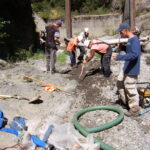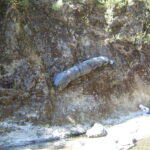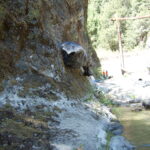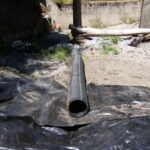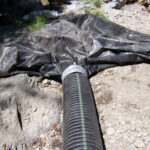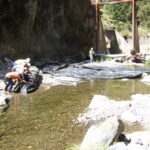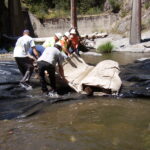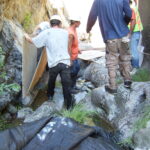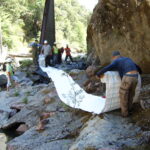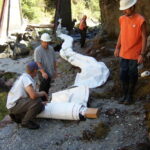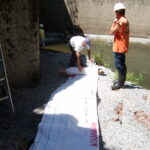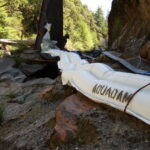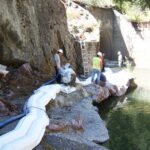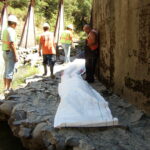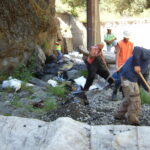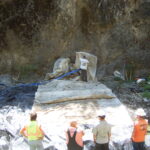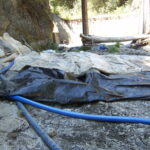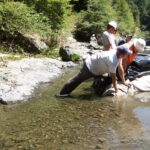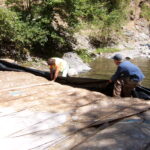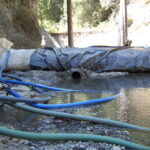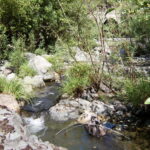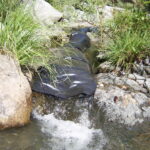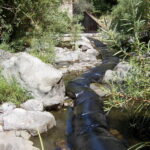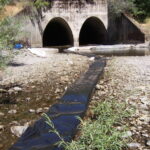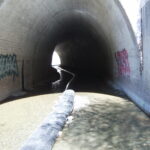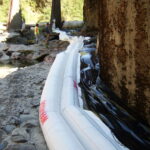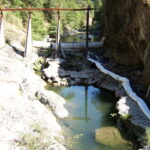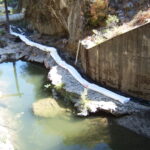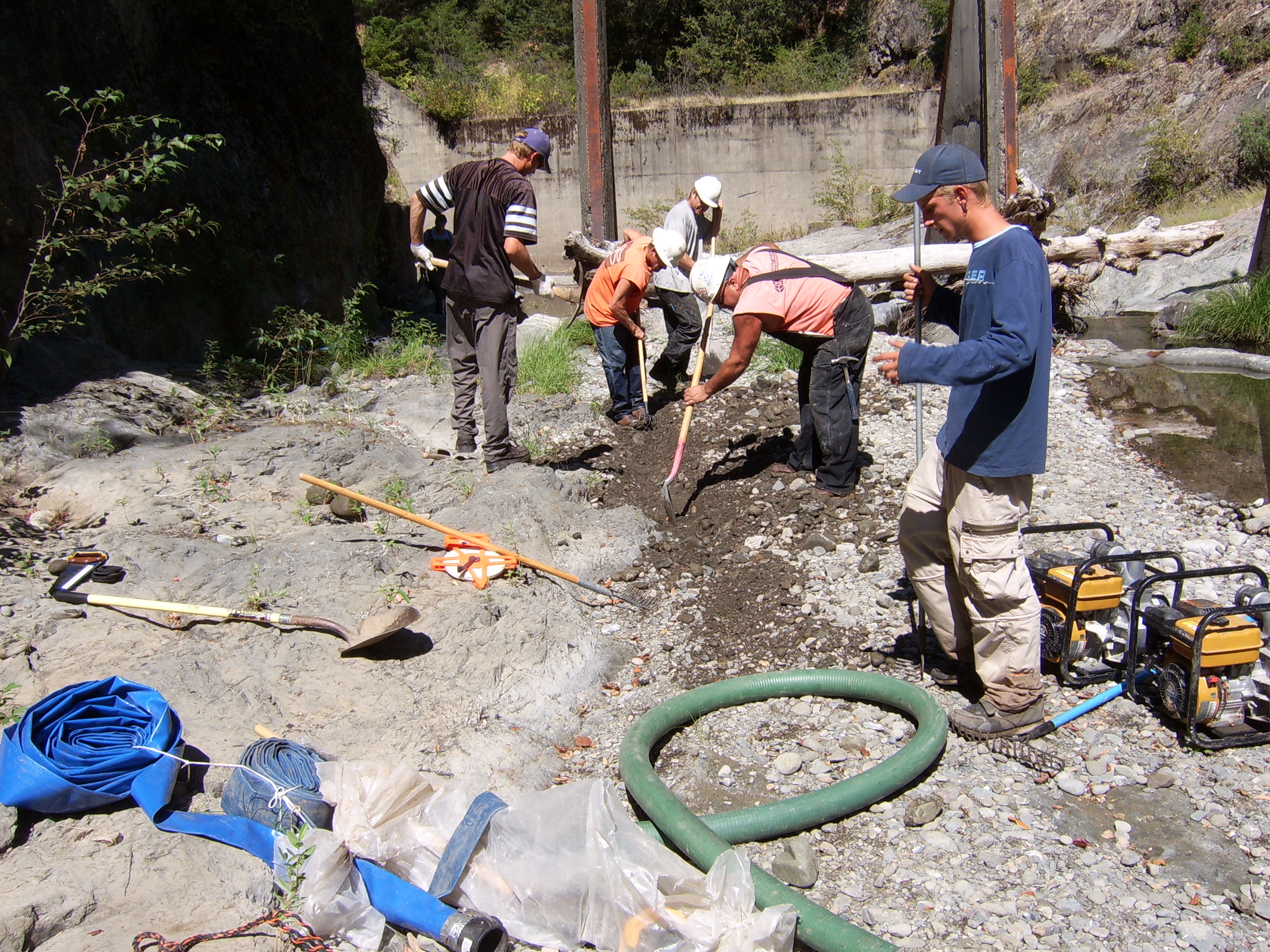
Workers are currently in the process of preparing the creekbed in Leggett, California for the installation of a 5ft tall, 11ft wide, 80ft long single closed end (SCE) AquaDam, as well as a flume pipe diversion. This project is being carried out by the California Department of Transportation (CalTrans) in order to rebuild a metal trash rack that has been compromised after 40 years of use. The location of this project is within Rattlesnake Creek, situated adjacent to US Highway 101.
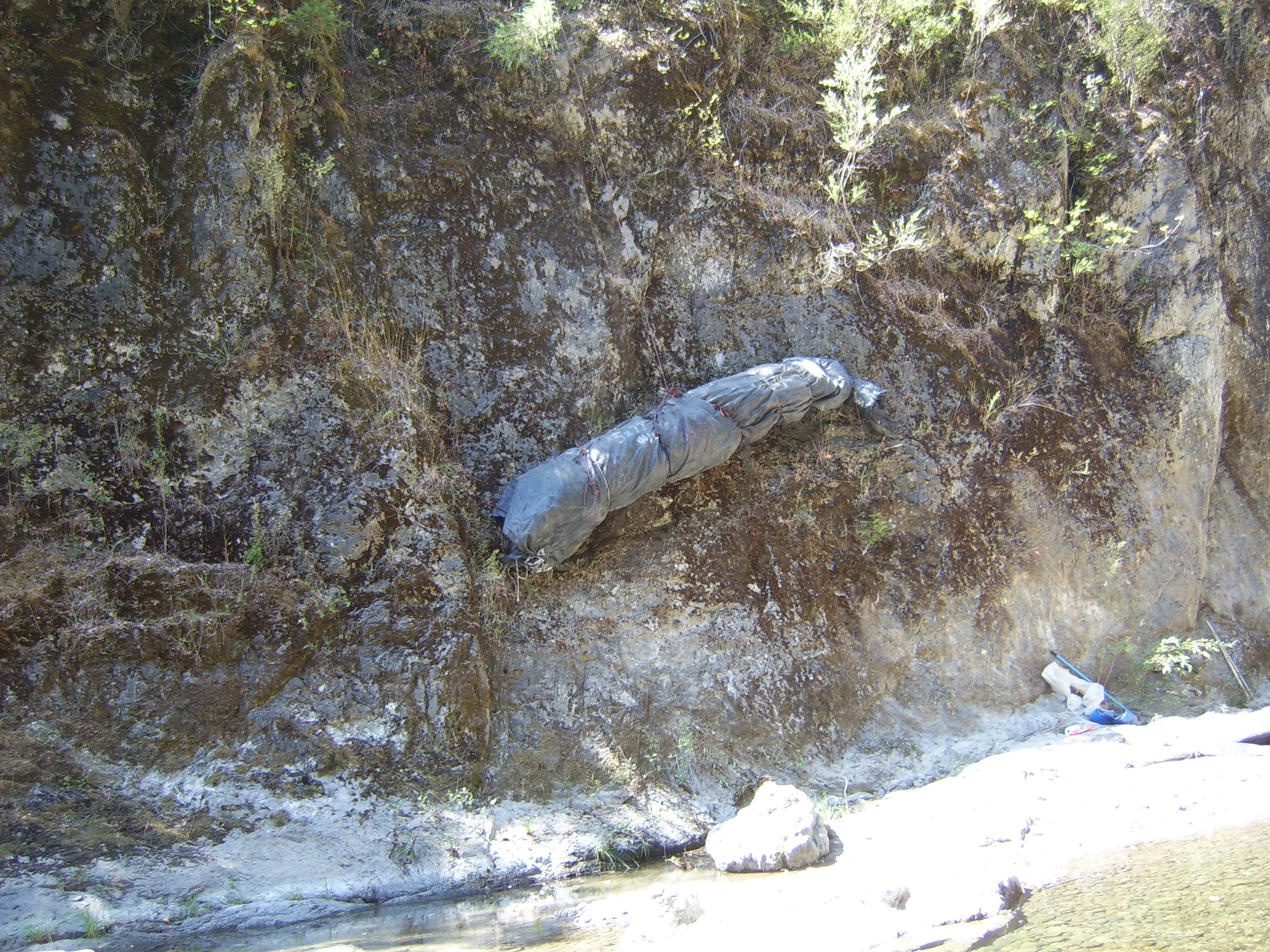
The 5ft tall SCE AquaDam is being lowered down the steep bank at a site with extremely rugged terrain. AquaDams are delivered rolled-up, similar to a carpet roll on a wooden beam. They are carefully wrapped in a protective covering and come equipped with lifting ropes/straps for easy handling.
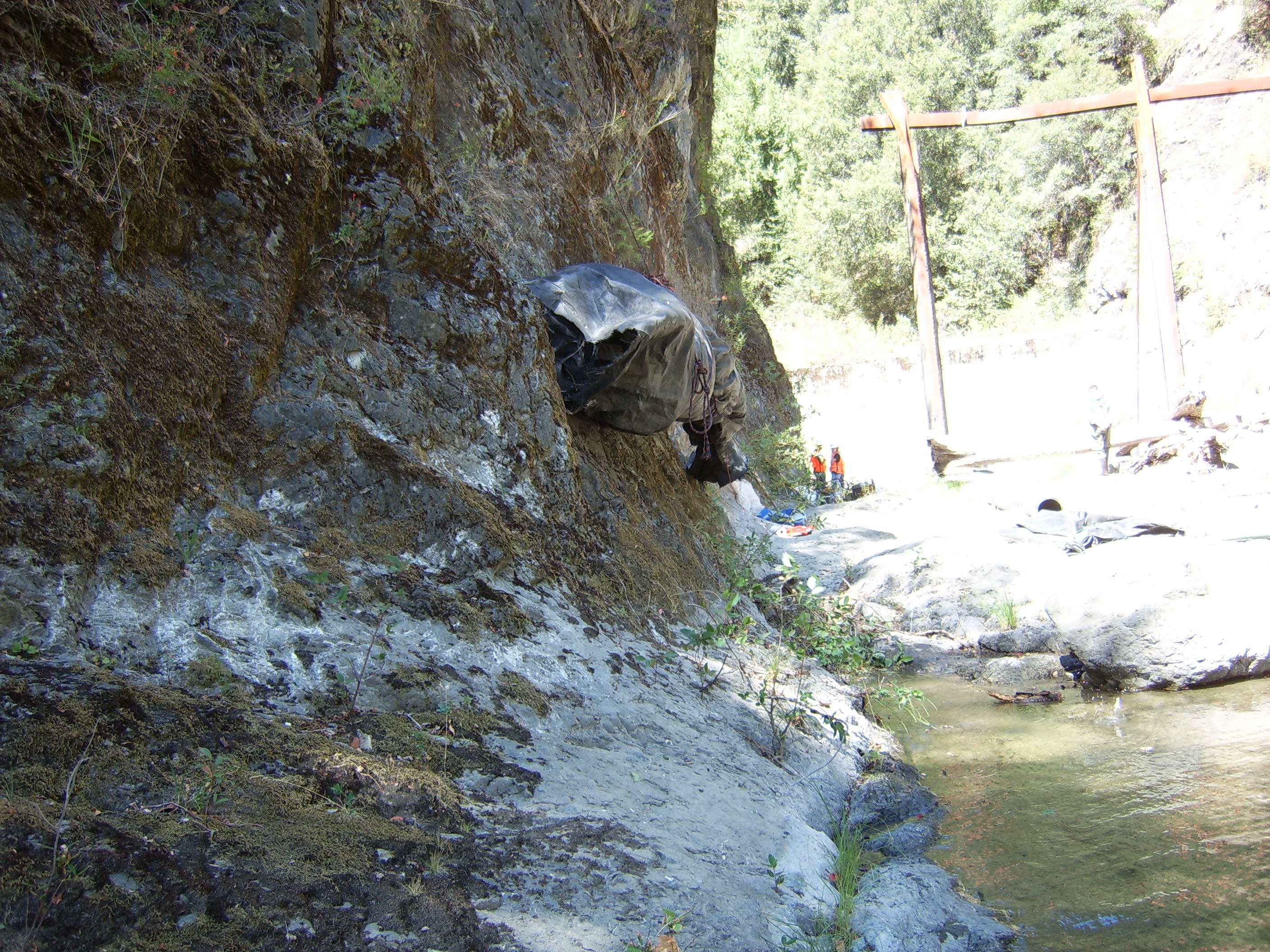
Another perspective showcasing the steepness of the bluff from which the AquaDam was lowered and launched.
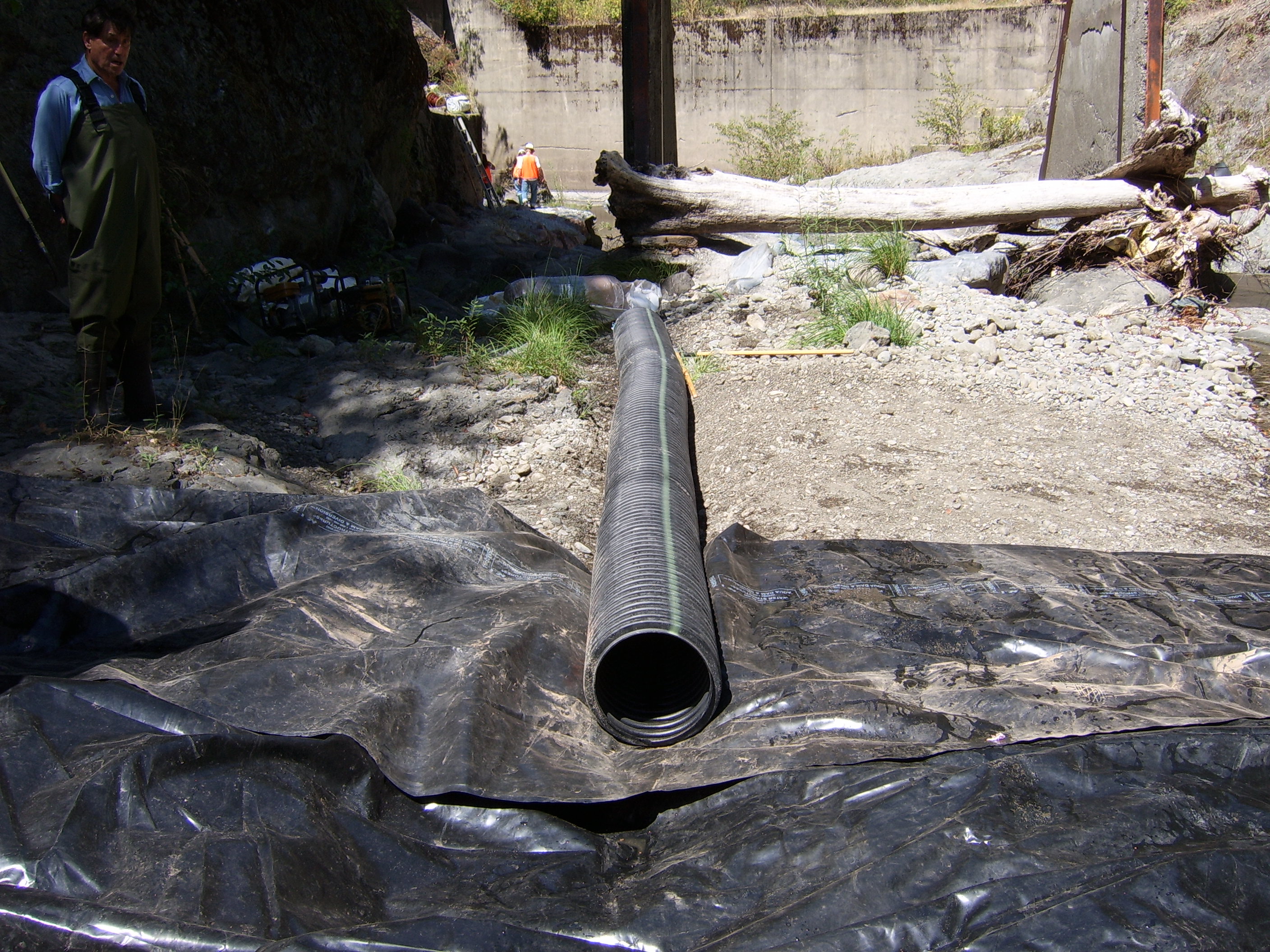
An 18in culvert was installed beneath a 5ft tall SCE AquaDam to redirect creek water around the construction site. This method, known as a flume pipe diversion, involves laying a pipe under an AquaDam to divert the flow of water.

The 18in culvert is fitted with polyethylene tubing, extending the outlet several hundred feet downstream to effectively redirect the creek’s flow.
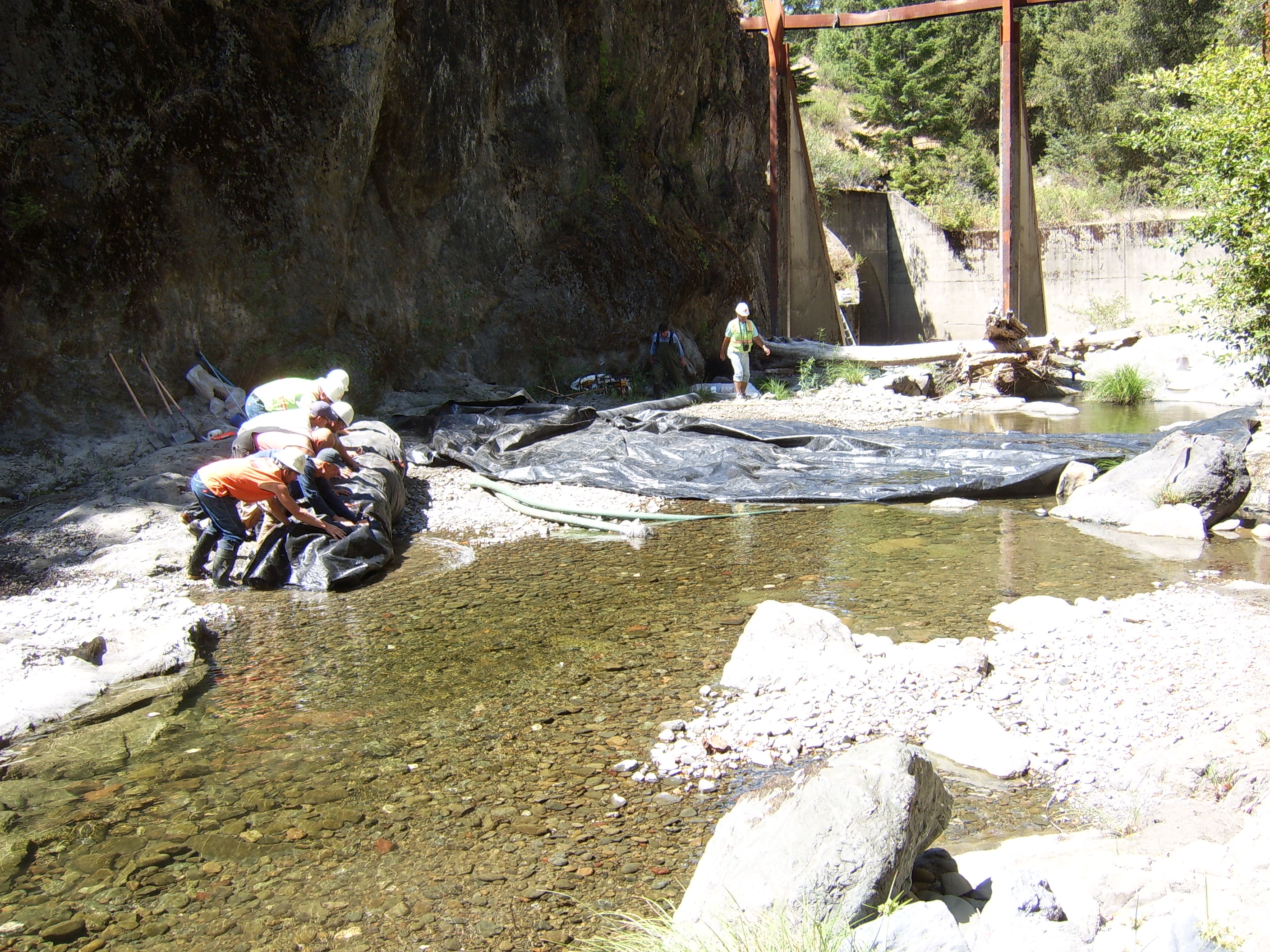
Workers are manually rolling the 5ft tall SCE AquaDam to its starting bank at the installation site, preparing it for deployment in the rugged terrain.
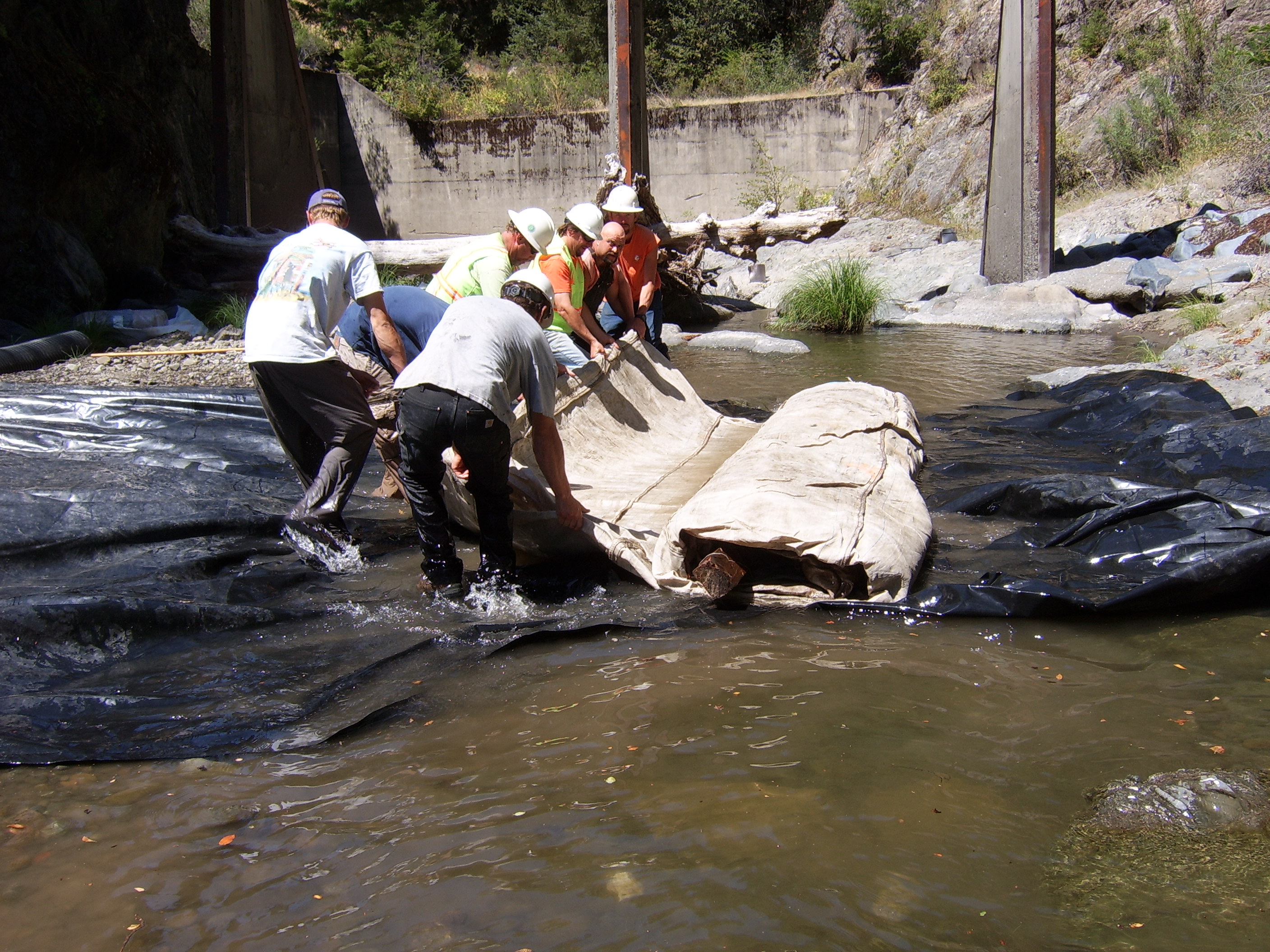
Workers begin unrolling the 5ft tall SCE AquaDam onto the black plastic sheet that was carefully laid over the 18in culvert, ensuring that water flow through the culvert is controlled and only begins at the appropriate time.
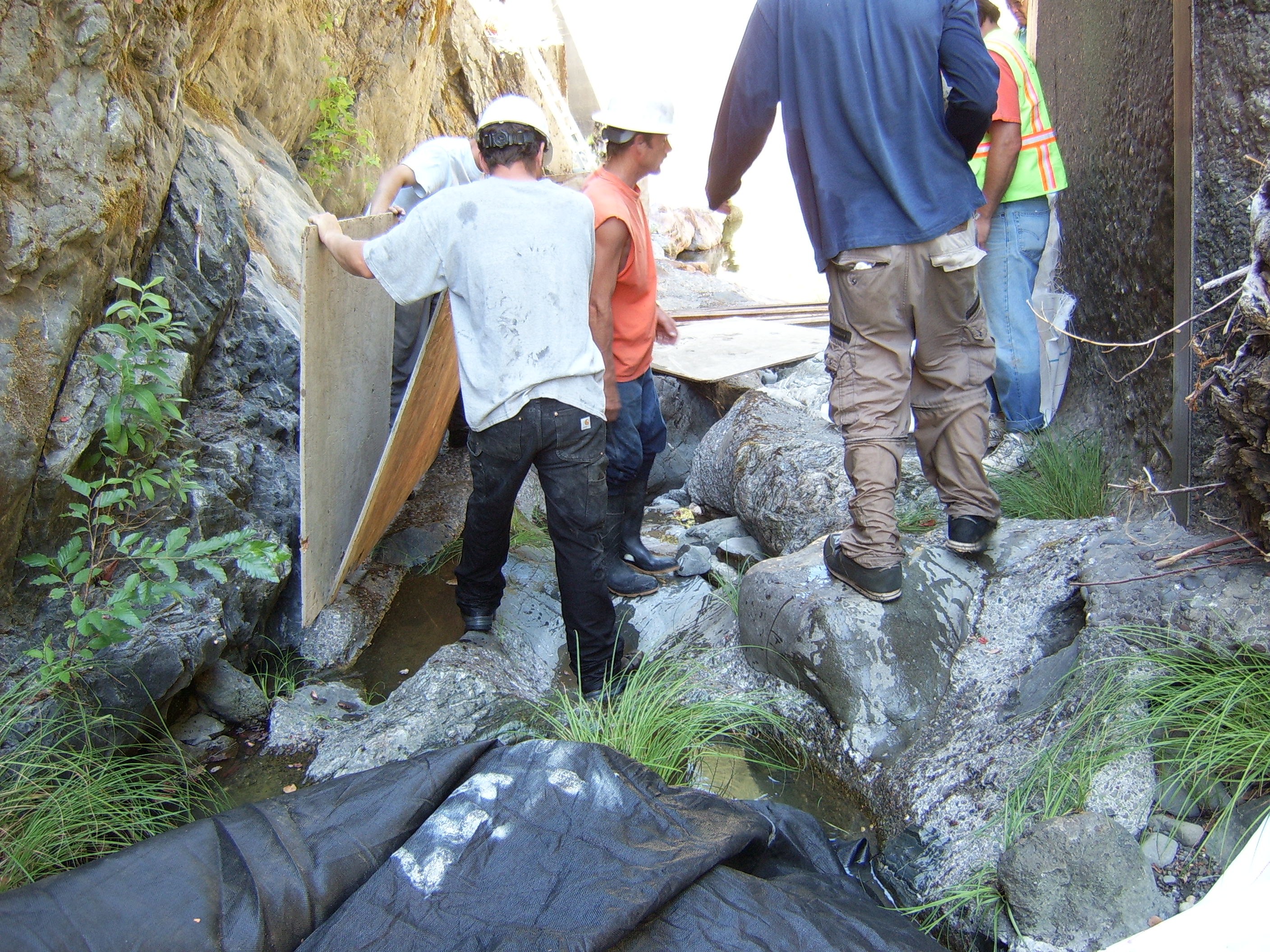
Workers are preparing the path to redirect creek flow away from the worksite. The flume tube path was obstructed by several large boulders, chunks of concrete, and pieces of steel, requiring careful clearing and adjustments.
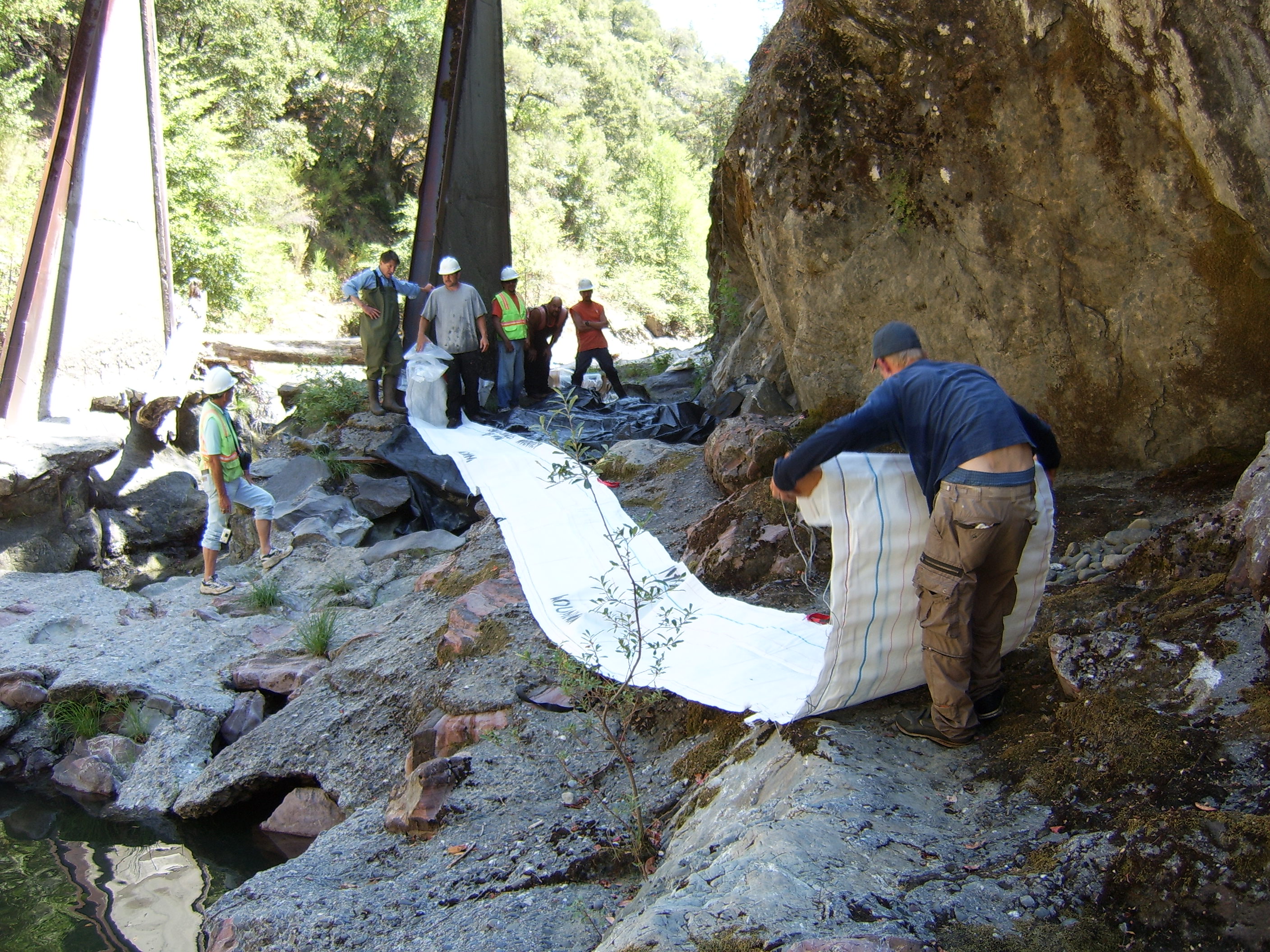
Workers are currently installing the first of two SCE AquaDams, each measuring 1.5ft in height, 3ft in width, and 25ft in length. These AquaDams are being implemented to ensure the stability and integrity of the flume tube.
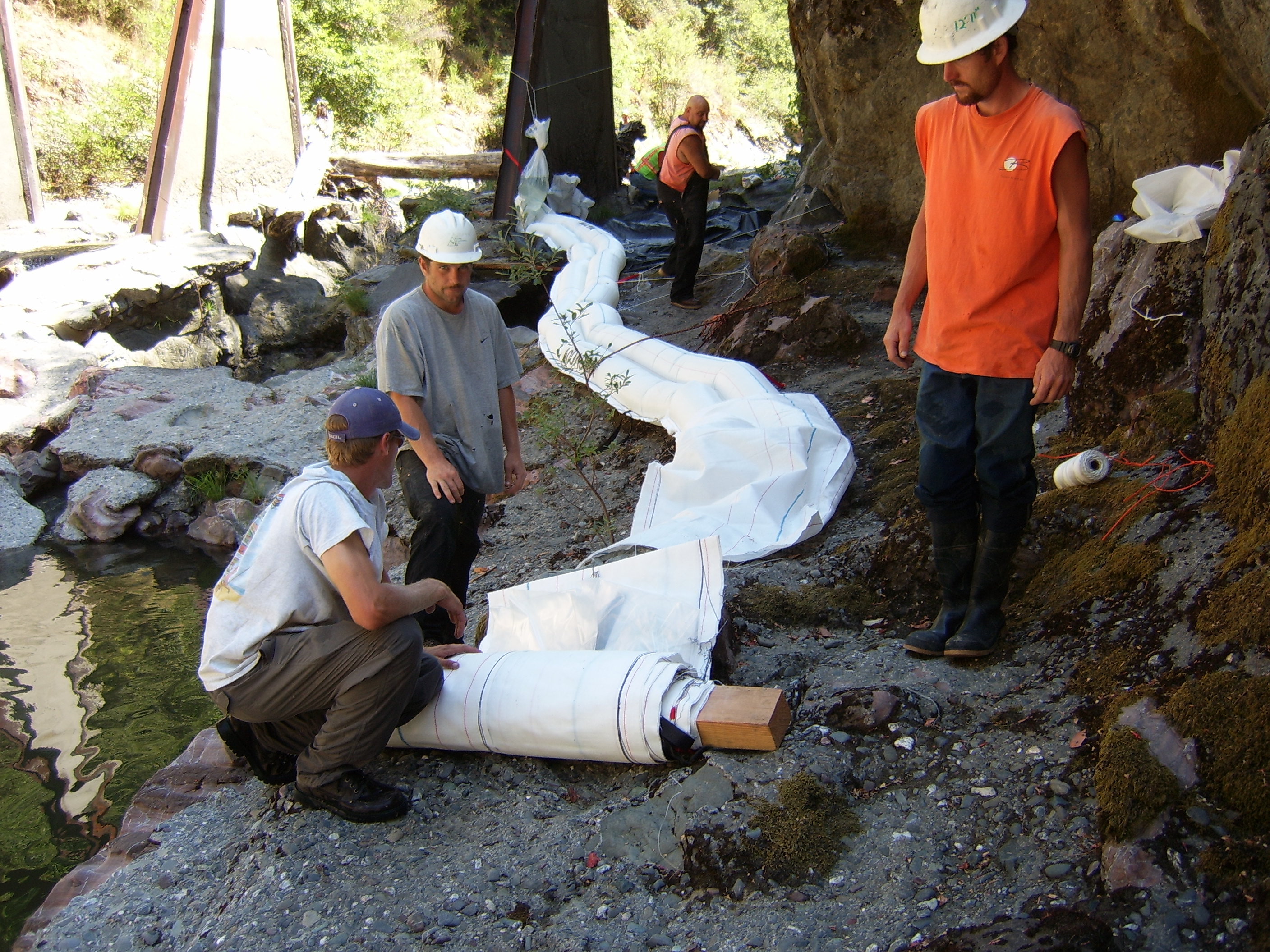
The workers have successfully filled the first 1.5ft tall SCE AquaDam and are now preparing to unroll the second one for filling.
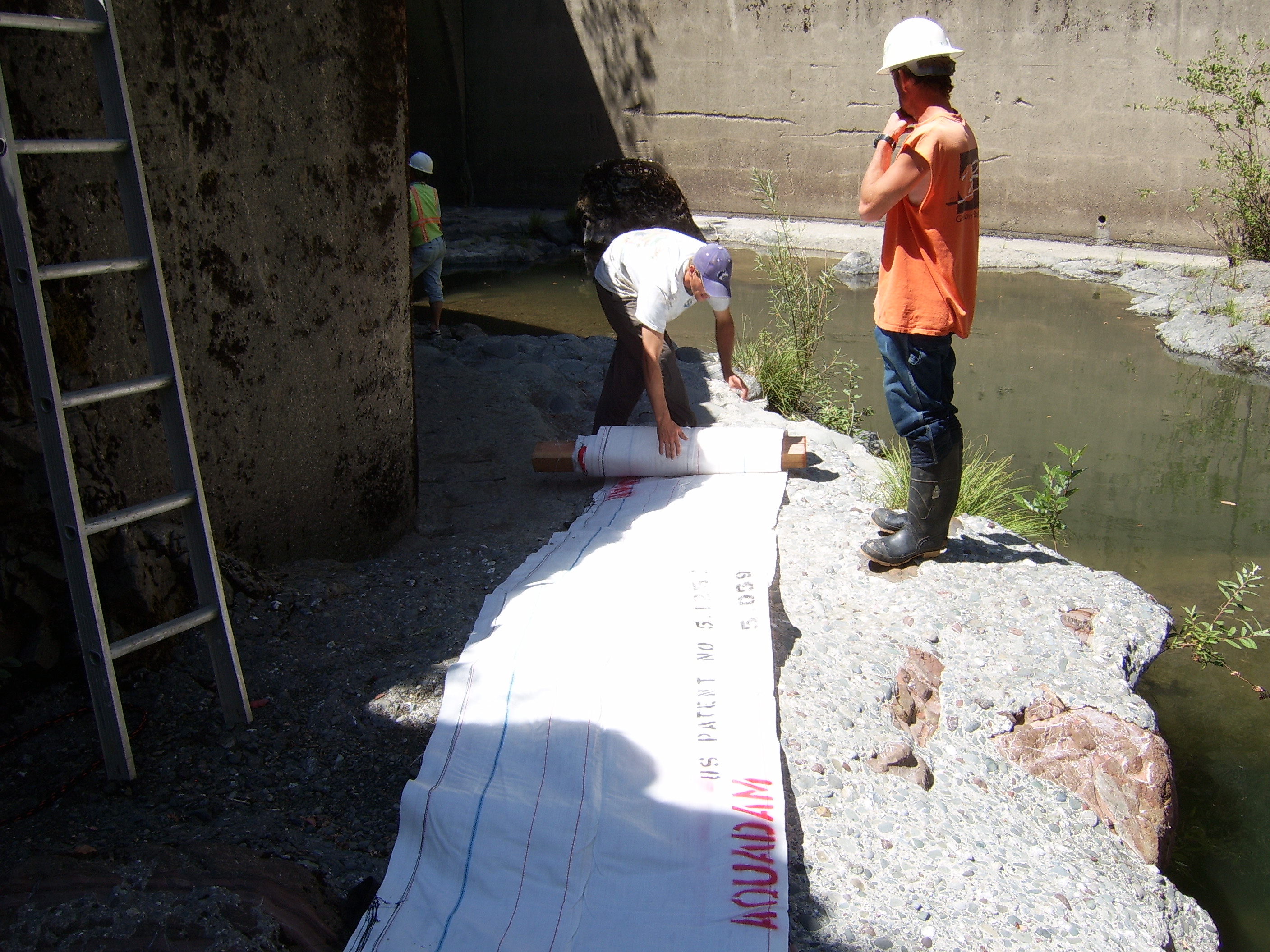
Workers have begun unrolling the second 1.5ft tall SCE AquaDam into position.
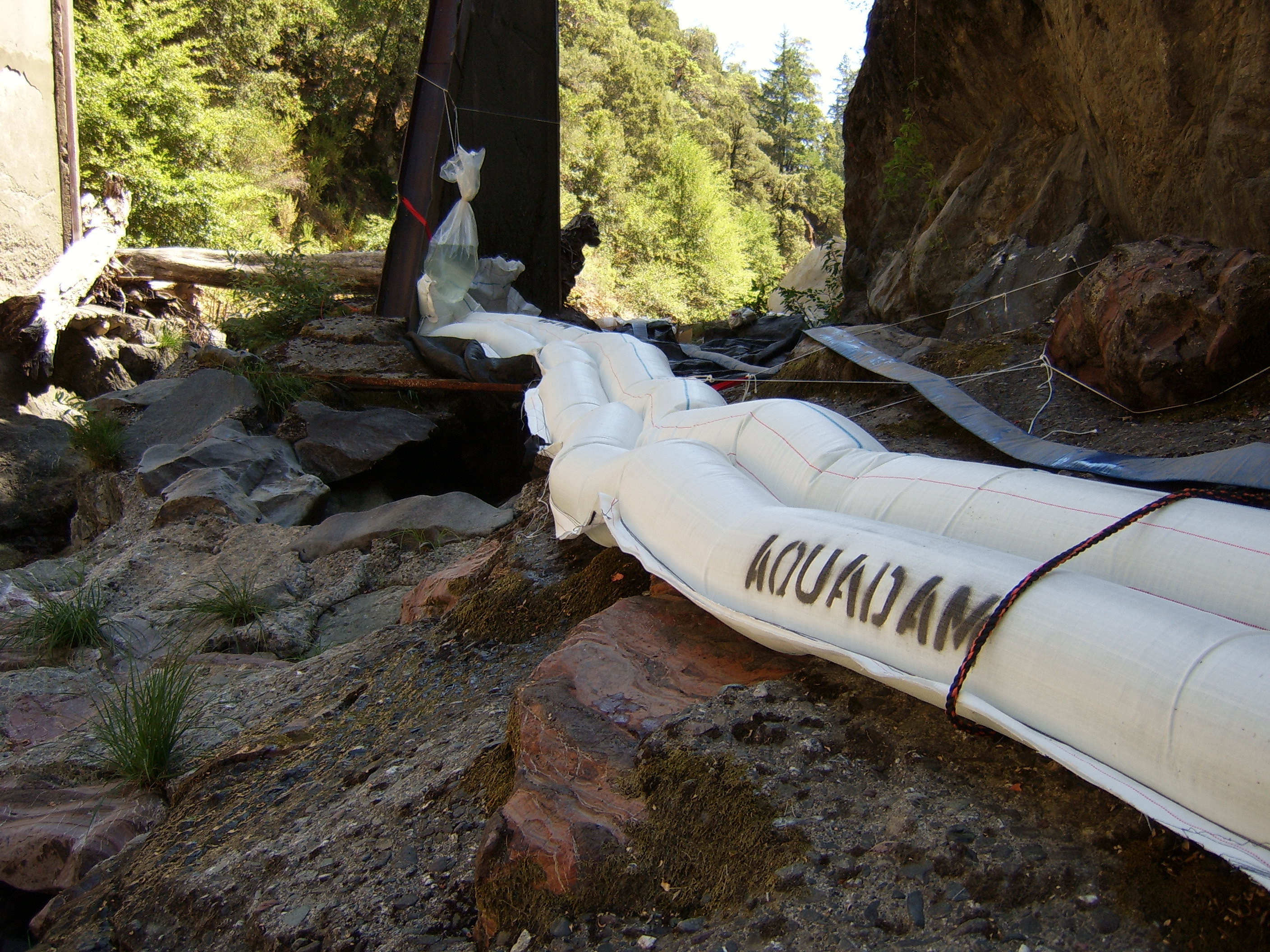
Note how the open end and fill-tubes of the first 1.5ft tall SCE AquaDam has been elevated and secured in position. A SCE AquaDam requires a starting bank to keep its open end and fill-tubes higher in elevation than the body of the AquaDam. The open end and fill-tubes of a SCE AquaDam must stay elevated higher than the full height of the dam along its given path. An AquaDam will only reach its full height at the lowest elevation along its given path.
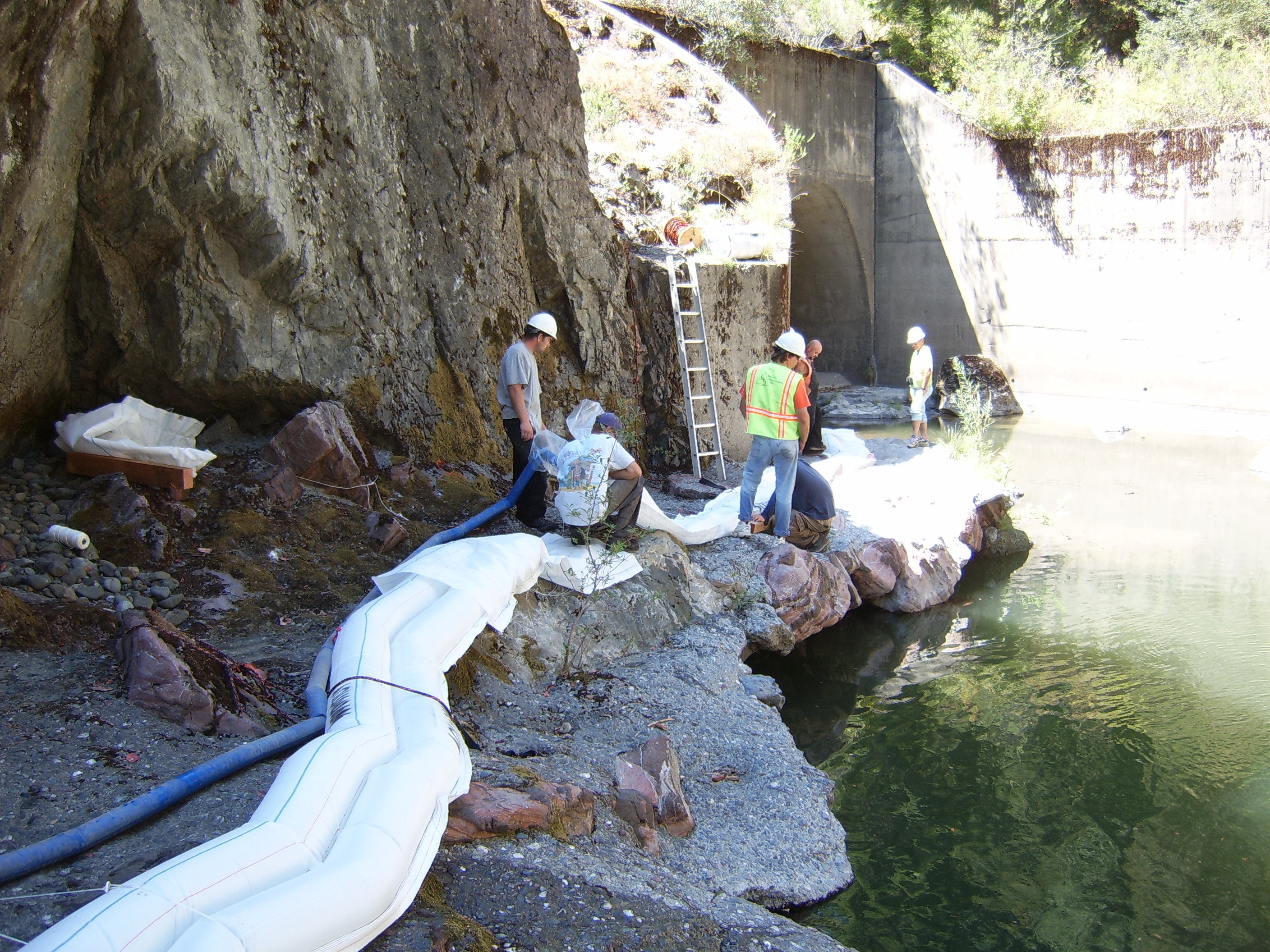
The crew has begun filling the second 1.5ft tall SCE AquaDam.
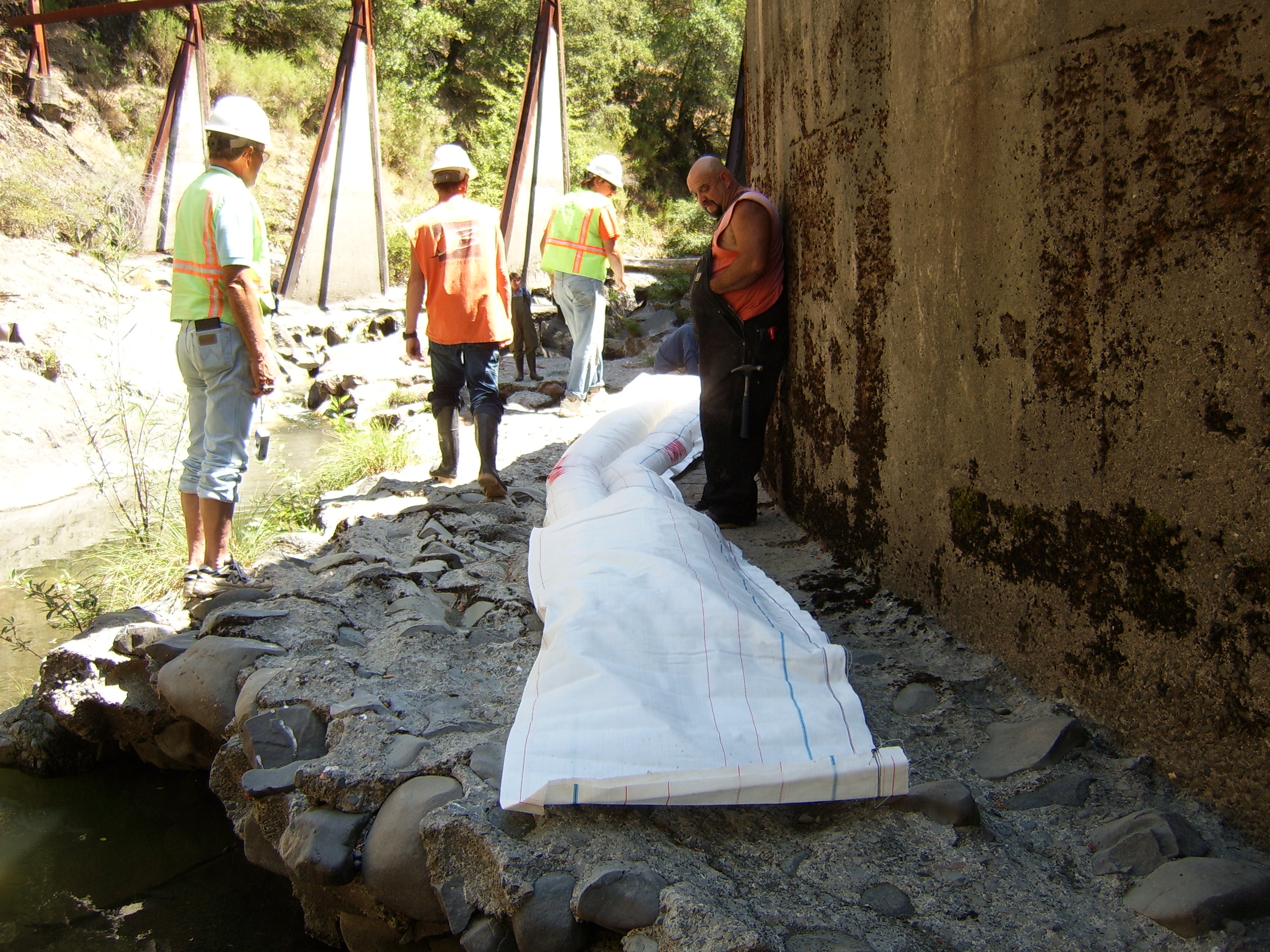
The second 1.5ft tall SCE AquaDam is nearly filled.
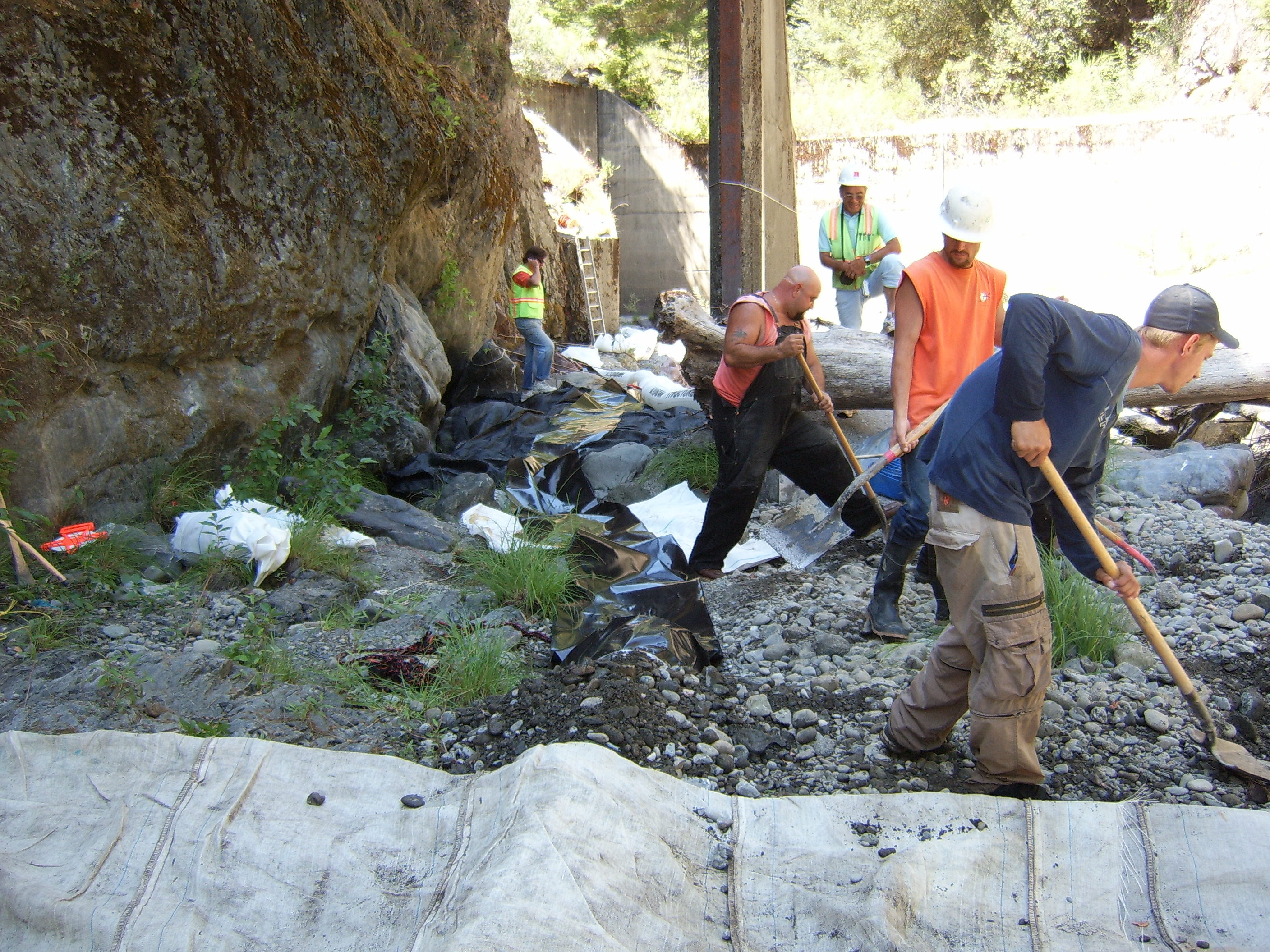
To minimize seepage, workers are placing creekbed material around the downstream end of the 18in culvert.
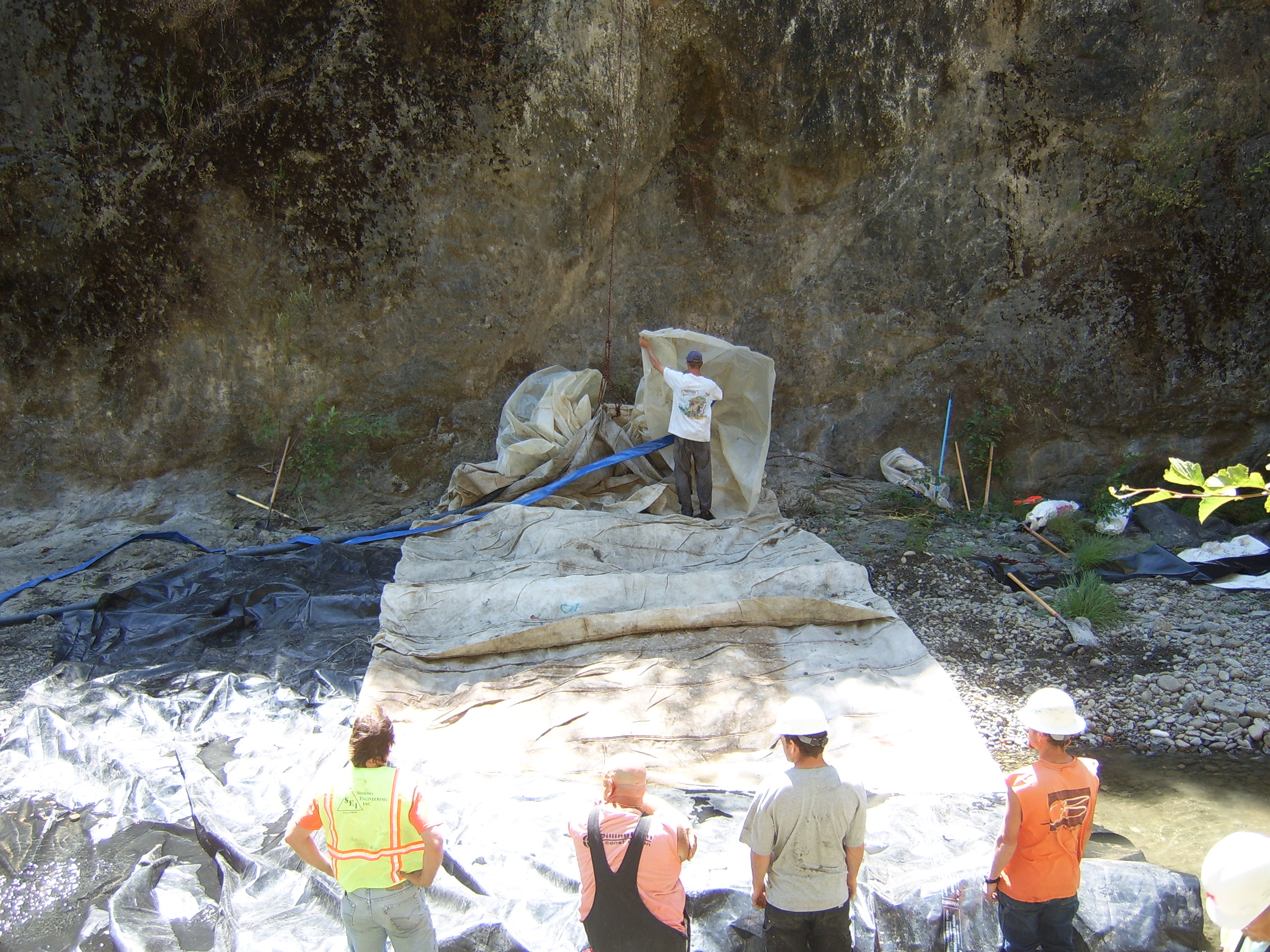
One worker is placing the blue discharge hoses into the fill-tubes to begin filling the 5ft tall SCE AquaDam with water, while others stand at and hold the roll end.
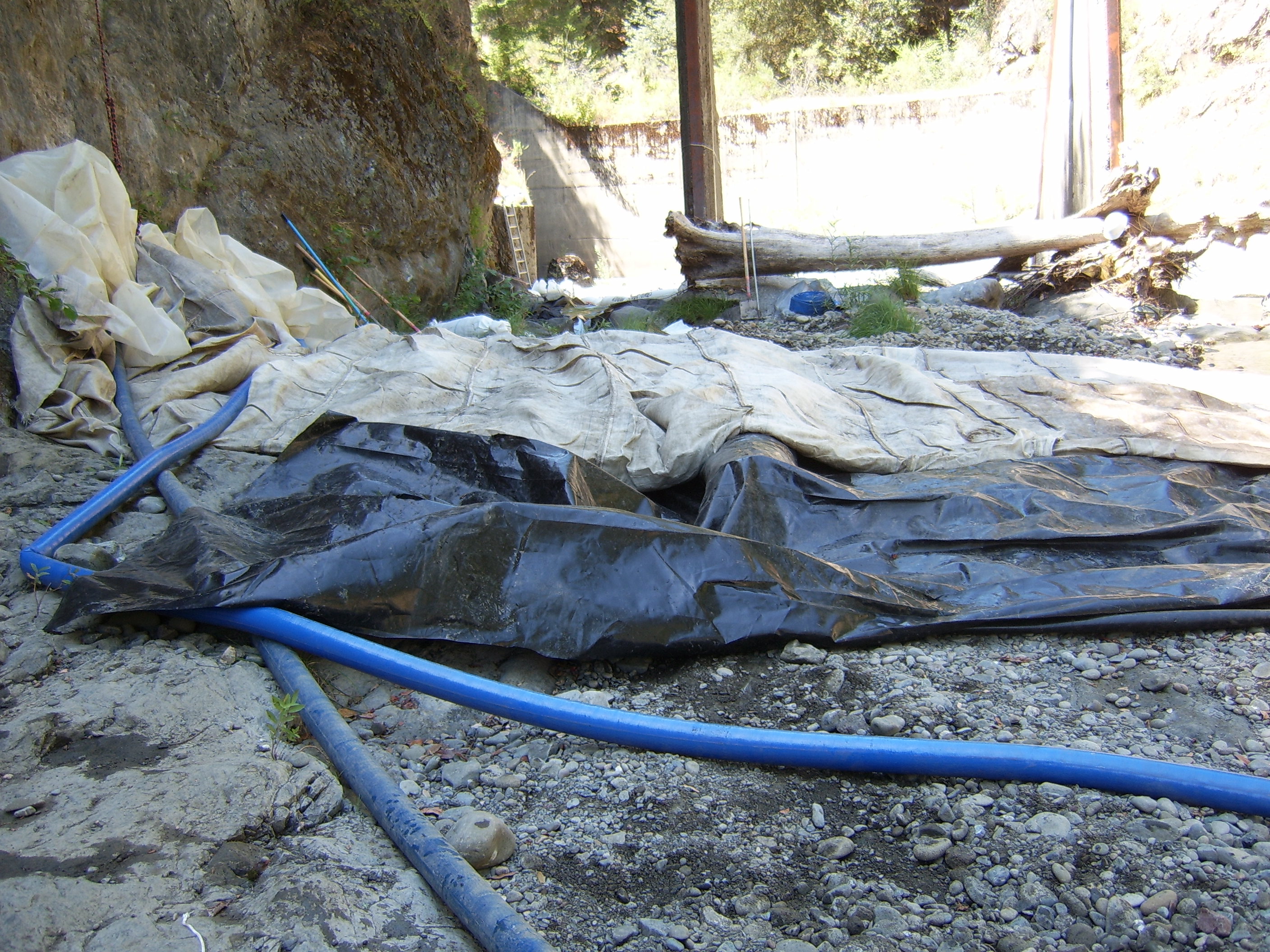
This view shows the open end and fill-tubes positioned at the starting bank. Note the rope extending up the bluff—it's securing the open end several feet above. Proper installation of an SCE AquaDam requires the starting bank to hold the open end at an elevation higher than the dam's maximum height. The open end and fill-tubes must remain above this full height along the entire designated path. Importantly, the AquaDam will only reach its full height at the lowest point along its route.
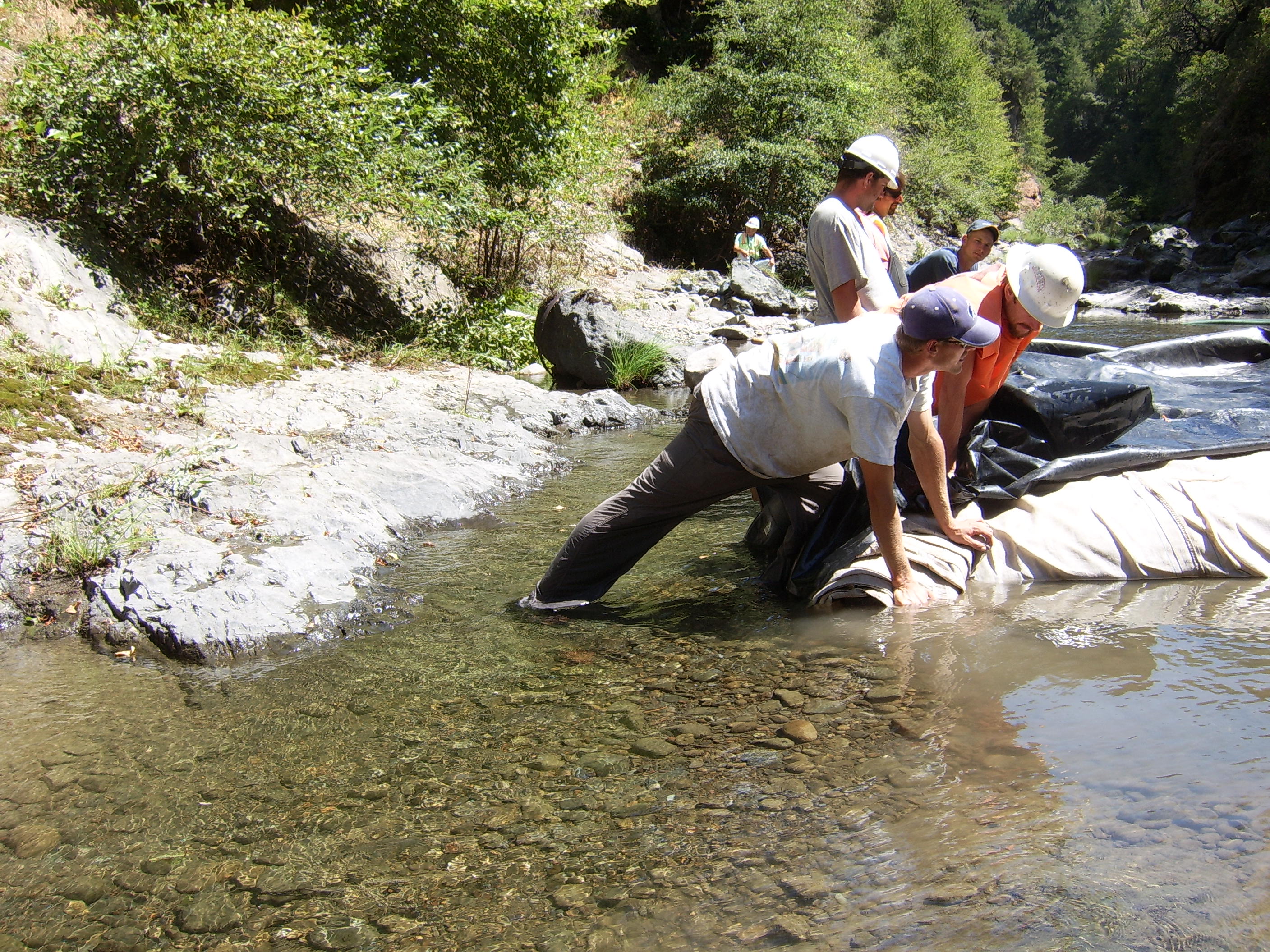
As the AquaDam fills with water, internal pressure within the fill-tubes pushes against the roll end, gradually causing it to unroll. Workers closely monitor both the movement of the roll end and the elevation of the unrolled portion relative to the surrounding water level.
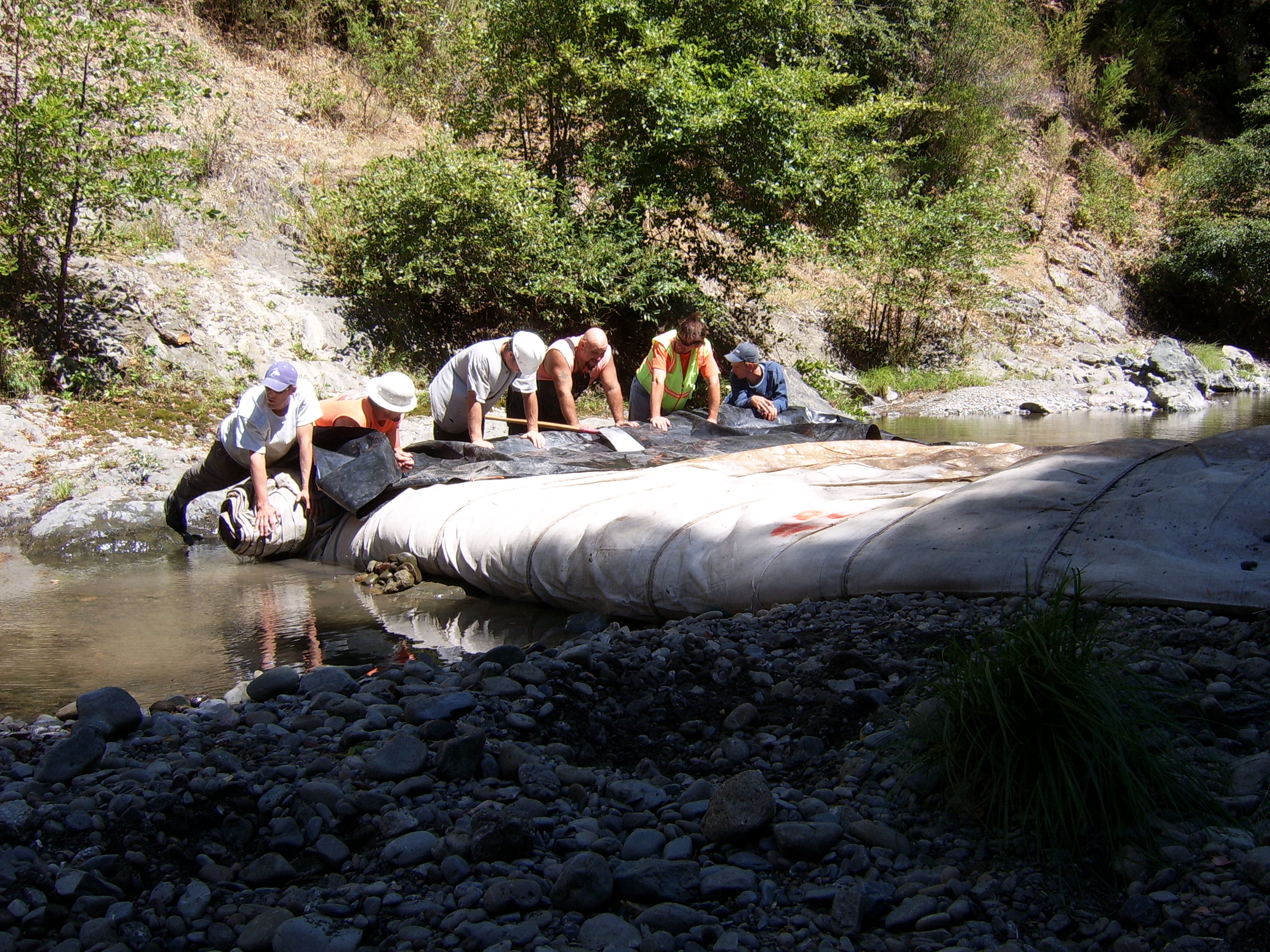
As the 80ft long SCE AquaDam crosses the creek, workers maintain head pressure within the dam above the upstream water level. They unroll the AquaDam gradually, releasing only a few feet at a time to ensure continuous control throughout the installation.
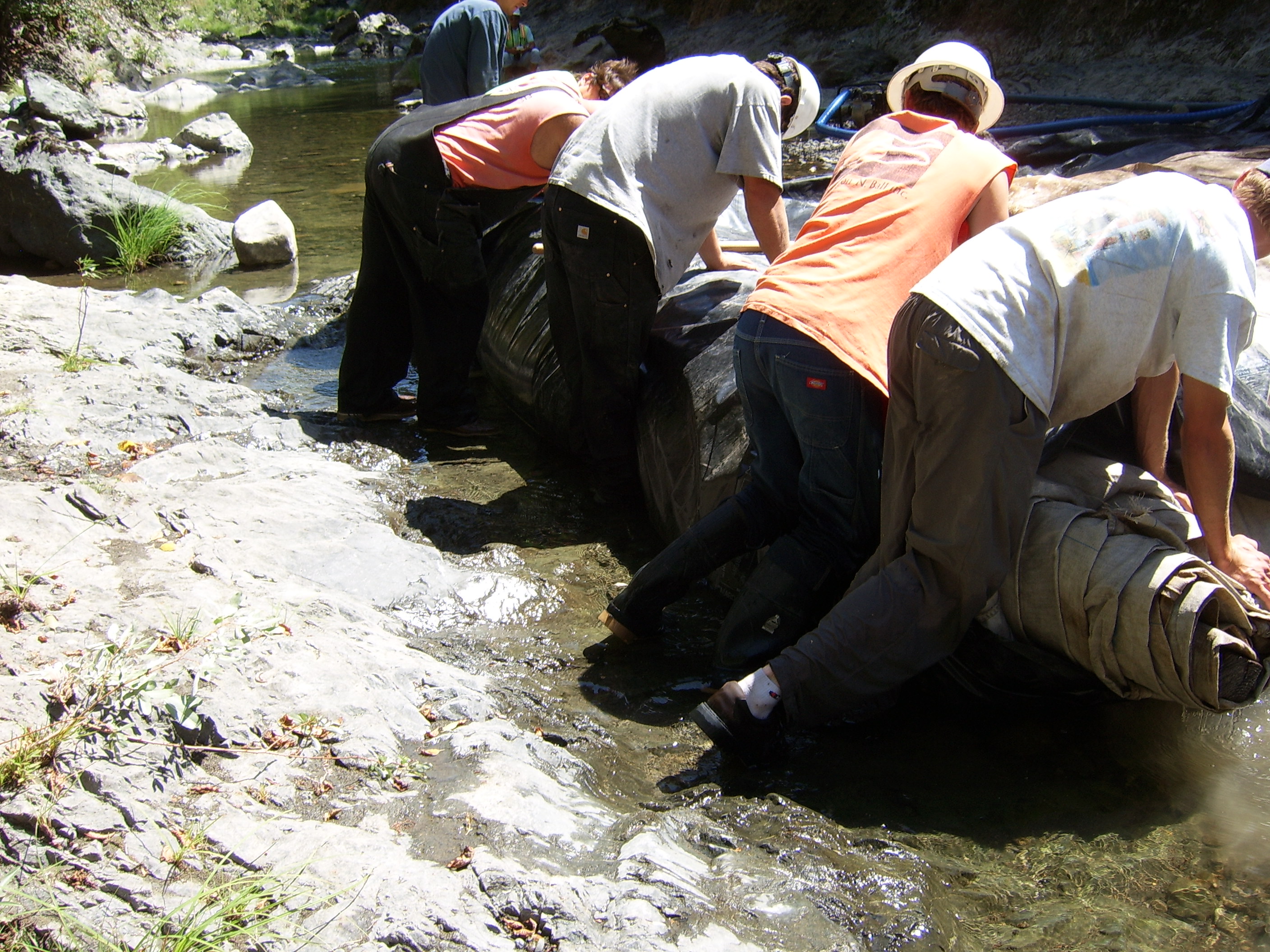
The AquaDam has nearly completed damming the creek, and the upstream water depth continues to rise until the diversion flume pipe system reaches equilibrium.
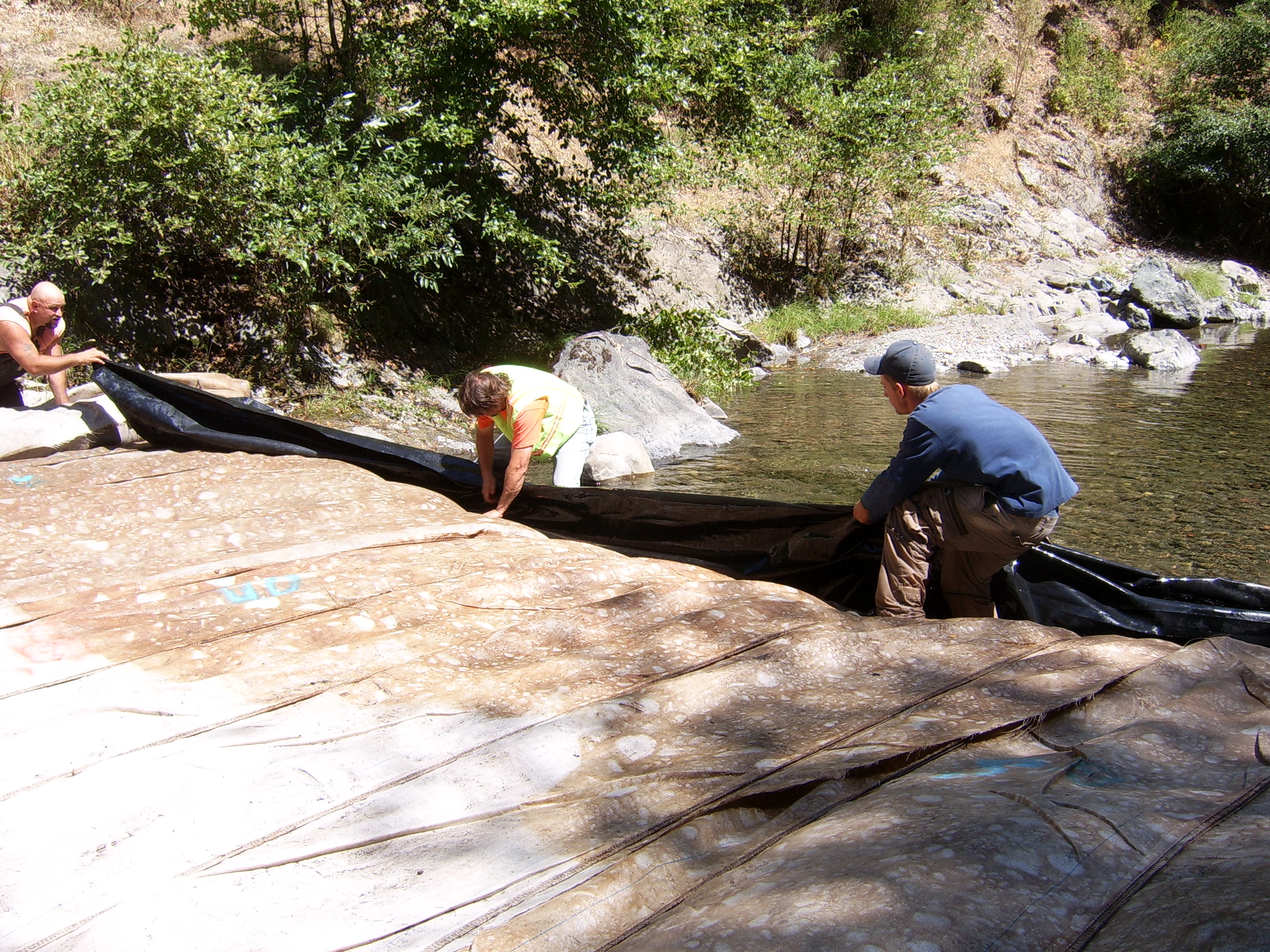
Workers are pulling back the black plastic sheeting atop the AquaDam to expose the opening of the 18in culvert and begin the diversion process.
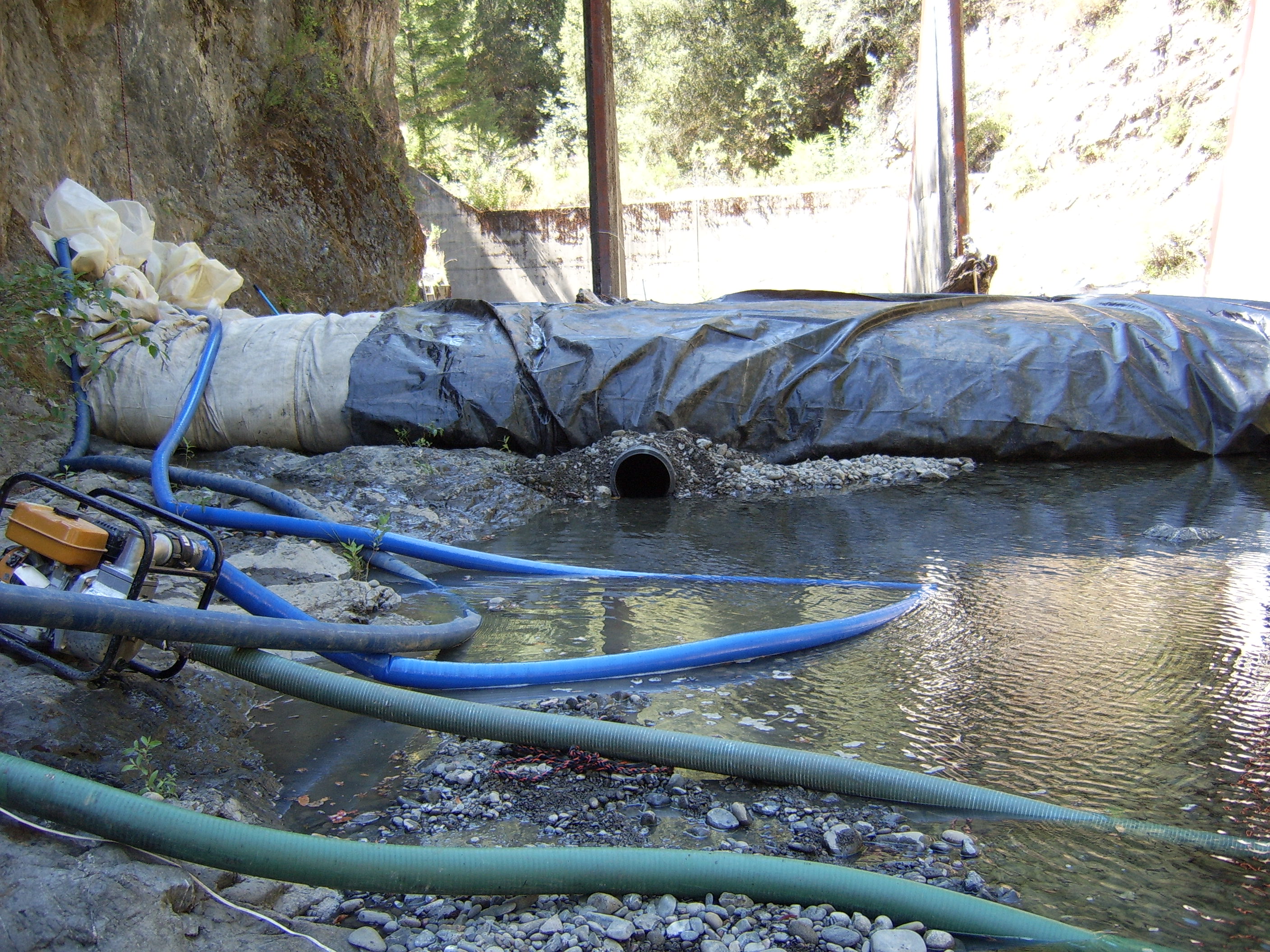
The 18in culvert beneath the AquaDam is now visible and has begun diverting creek water through the work area.
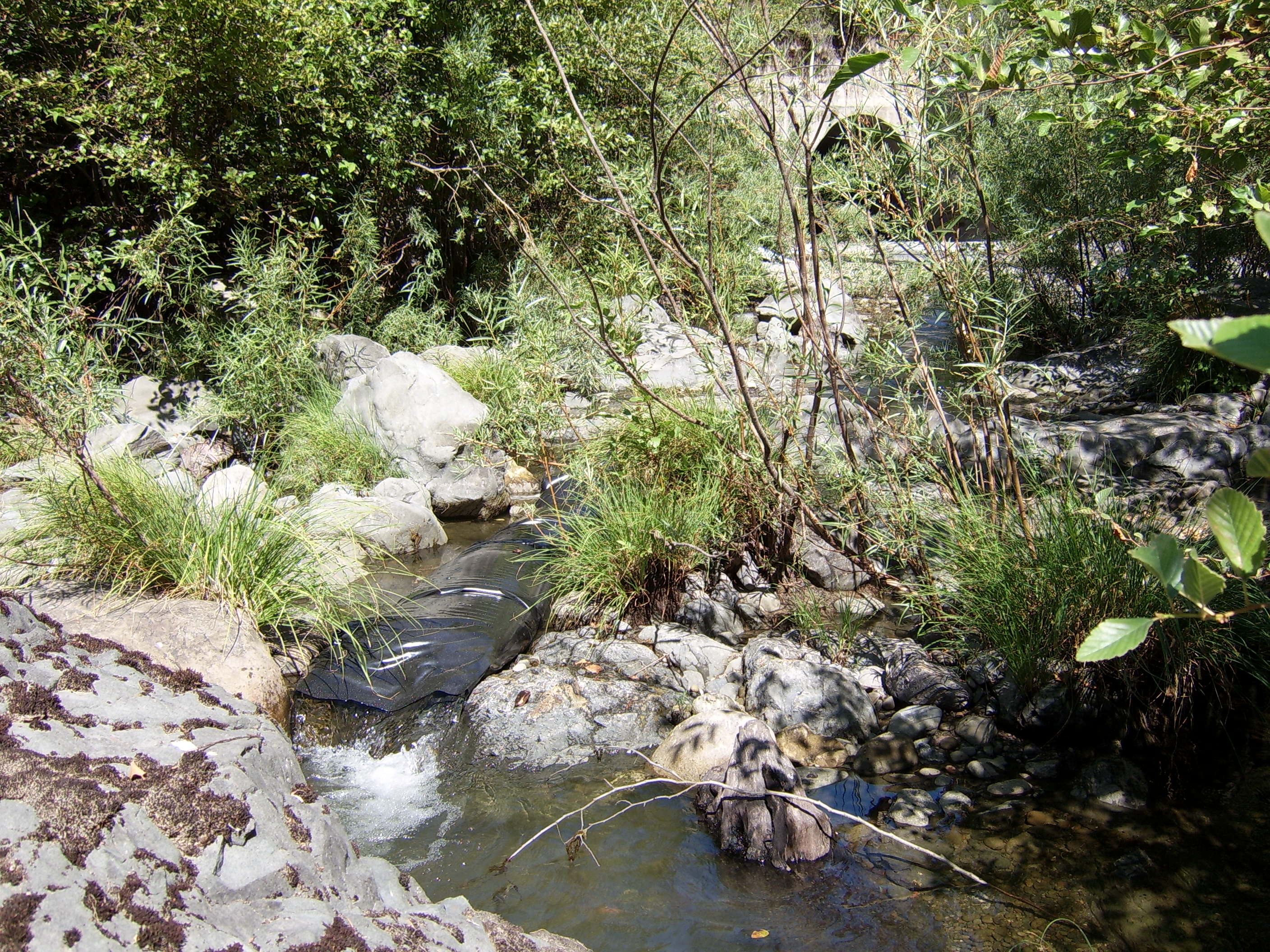
This is the downstream end of the flume tube diversion.
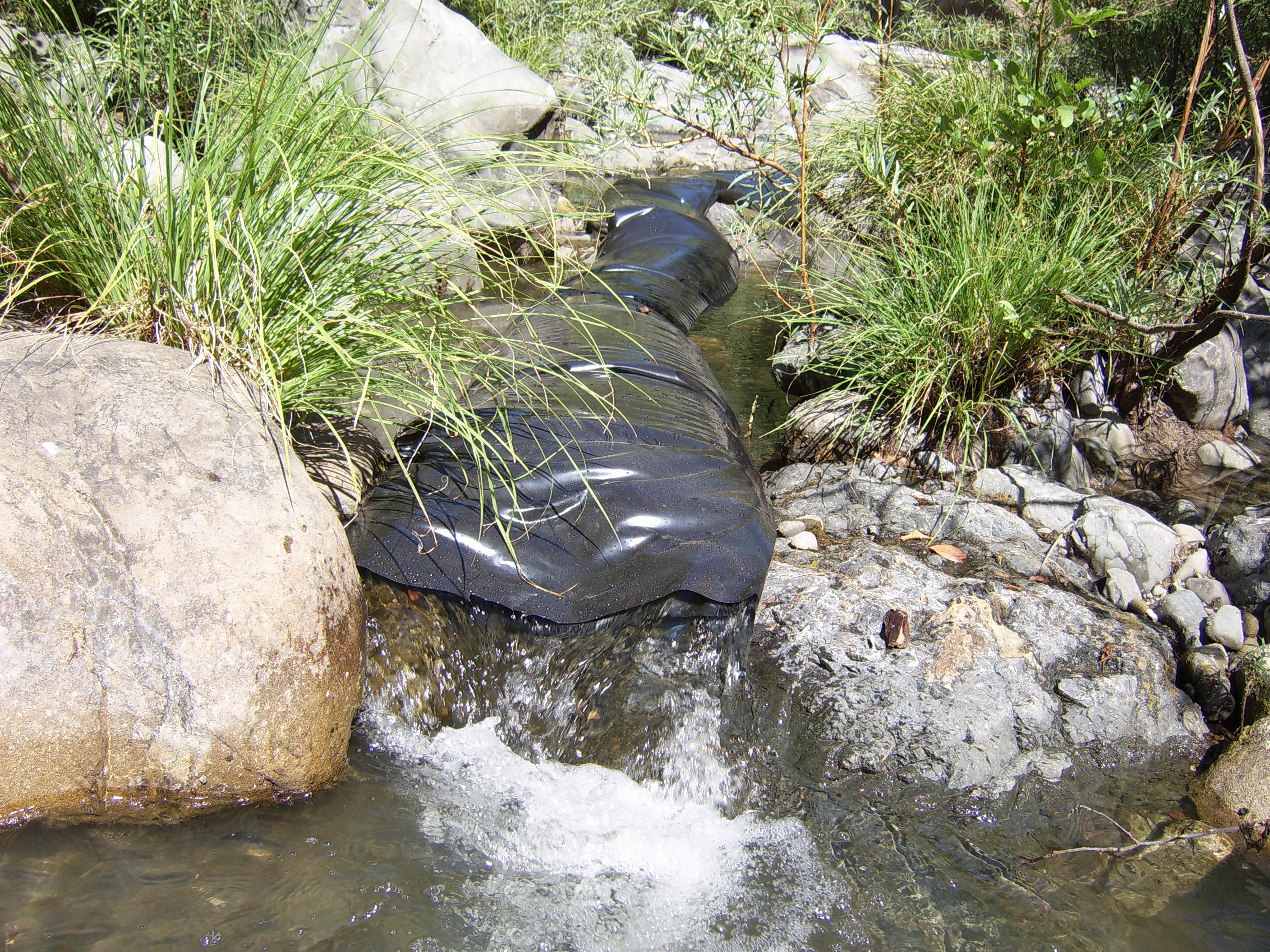
The end of the tube is flowing at less than half capacity. Workers positioned it on a pile of boulders to minimize erosion at the outlet.
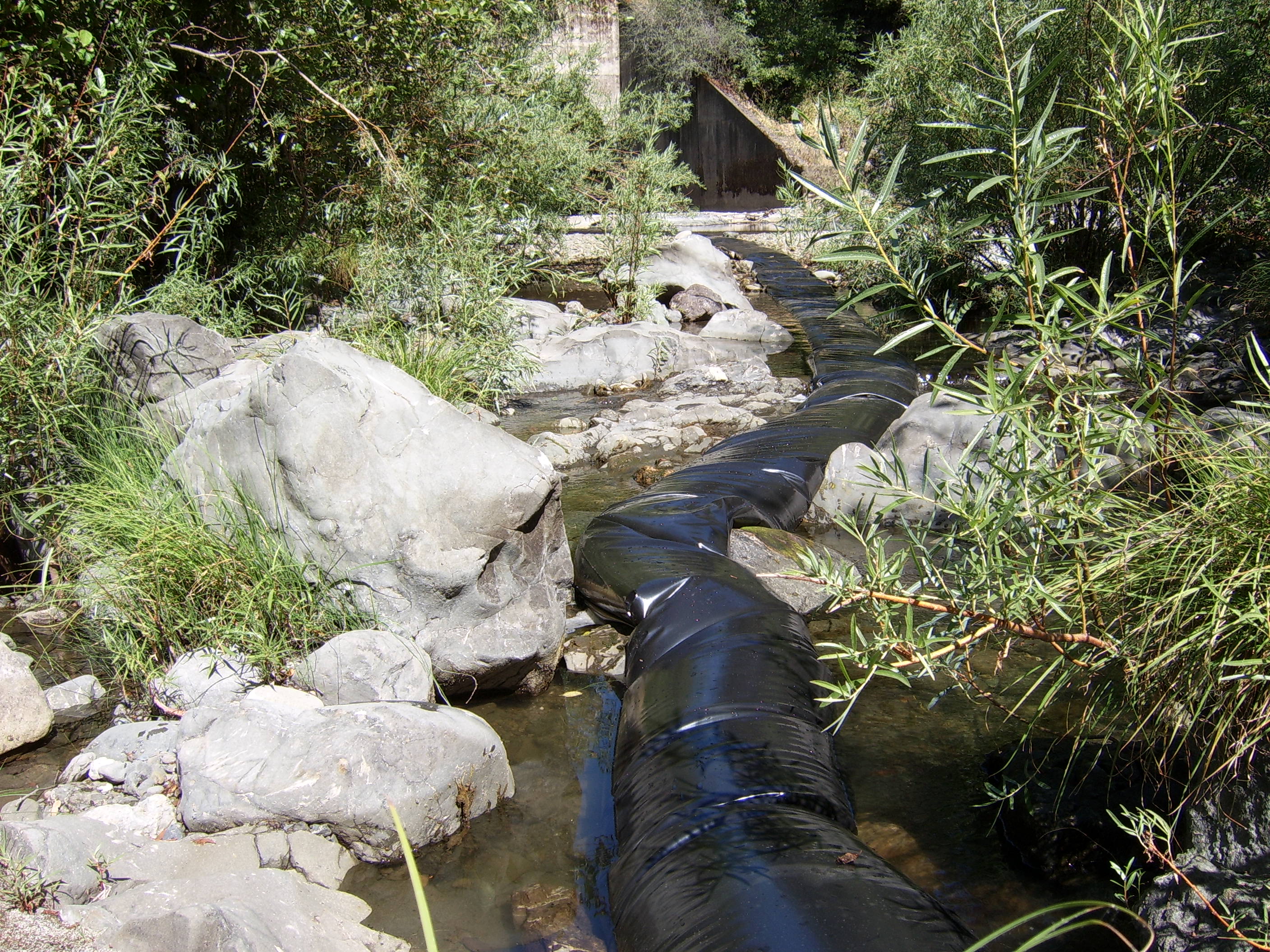
A view from the downstream end of the diversion, looking upstream along the flume tube.
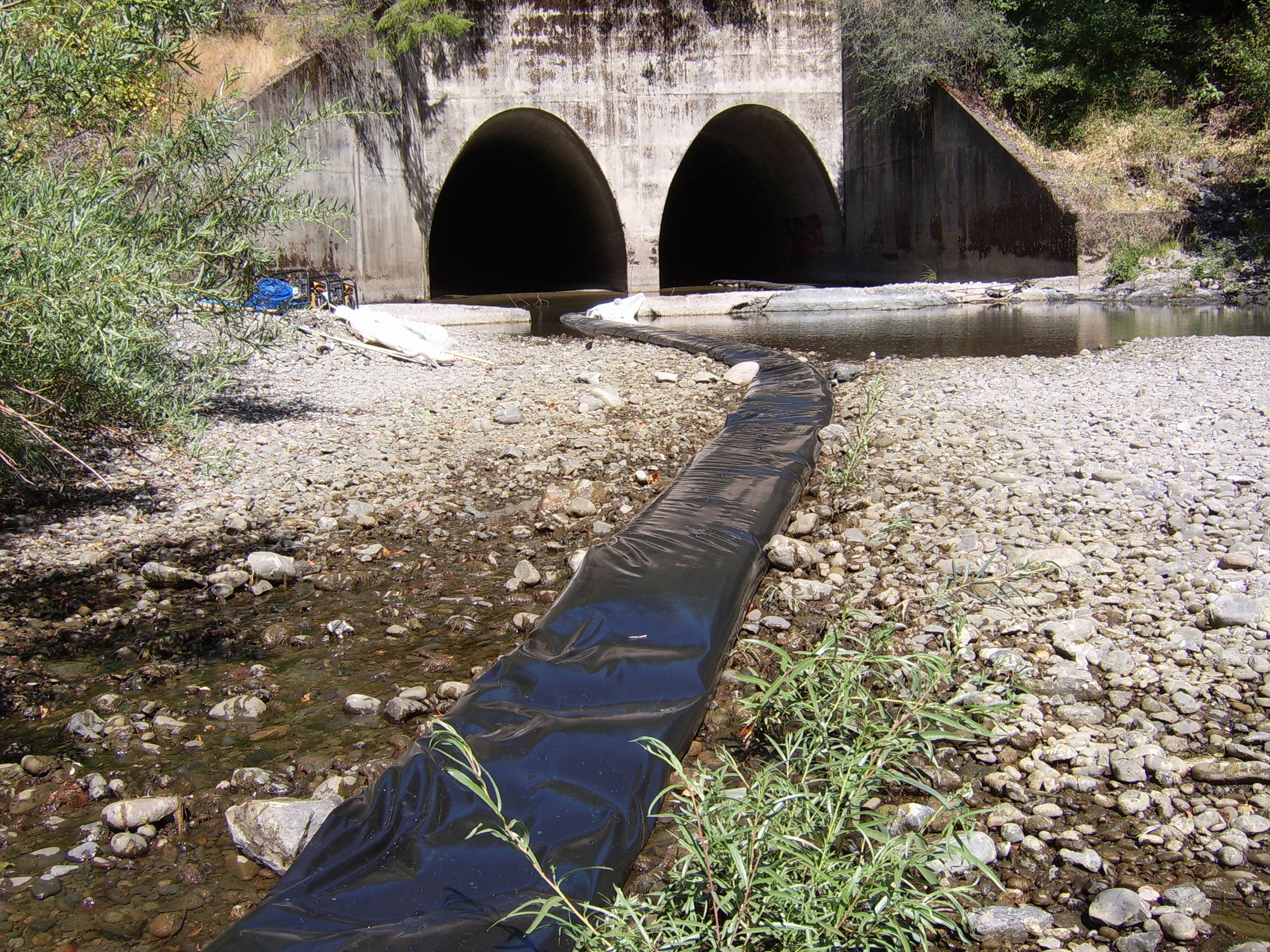
The flume tube after exiting the arched culvert bridge, continuing downstream.
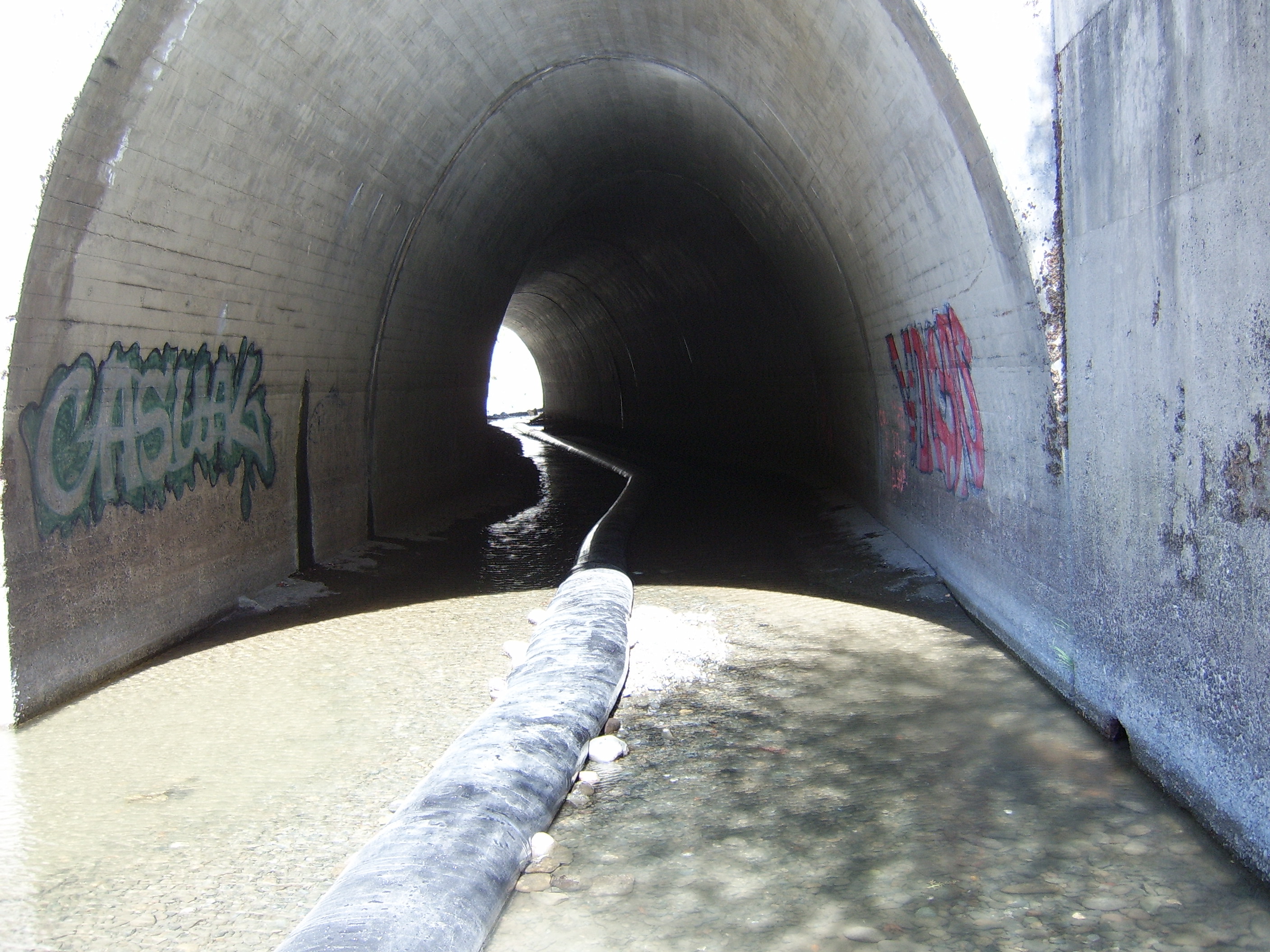
The flume tube extended through the entire length of the arched culvert bridge, which carries four lanes of traffic overhead.
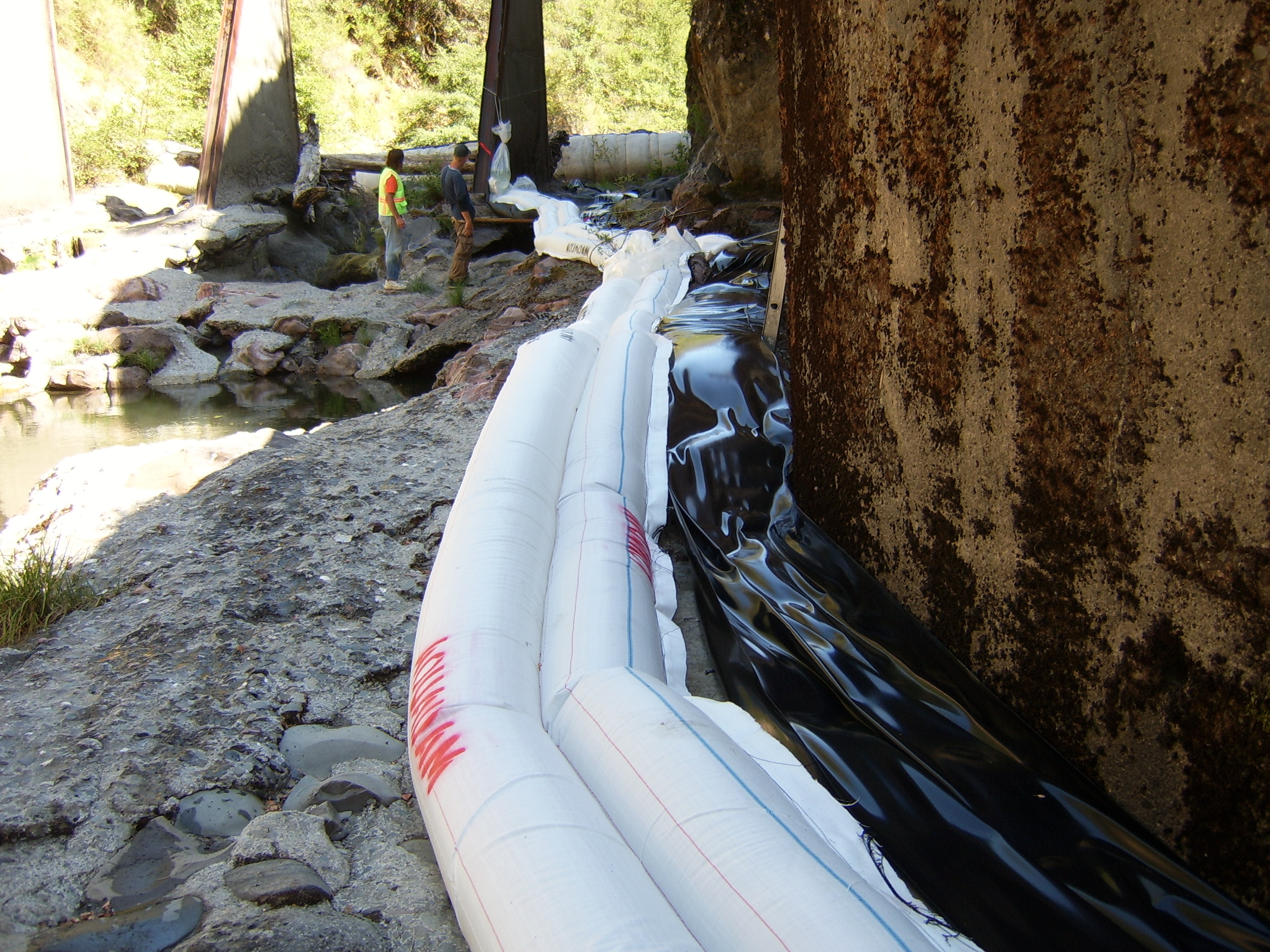
Here, the flume tube can be seen running between the bluff and the 1.5ft tall SCE AquaDams as it descends from the culvert.
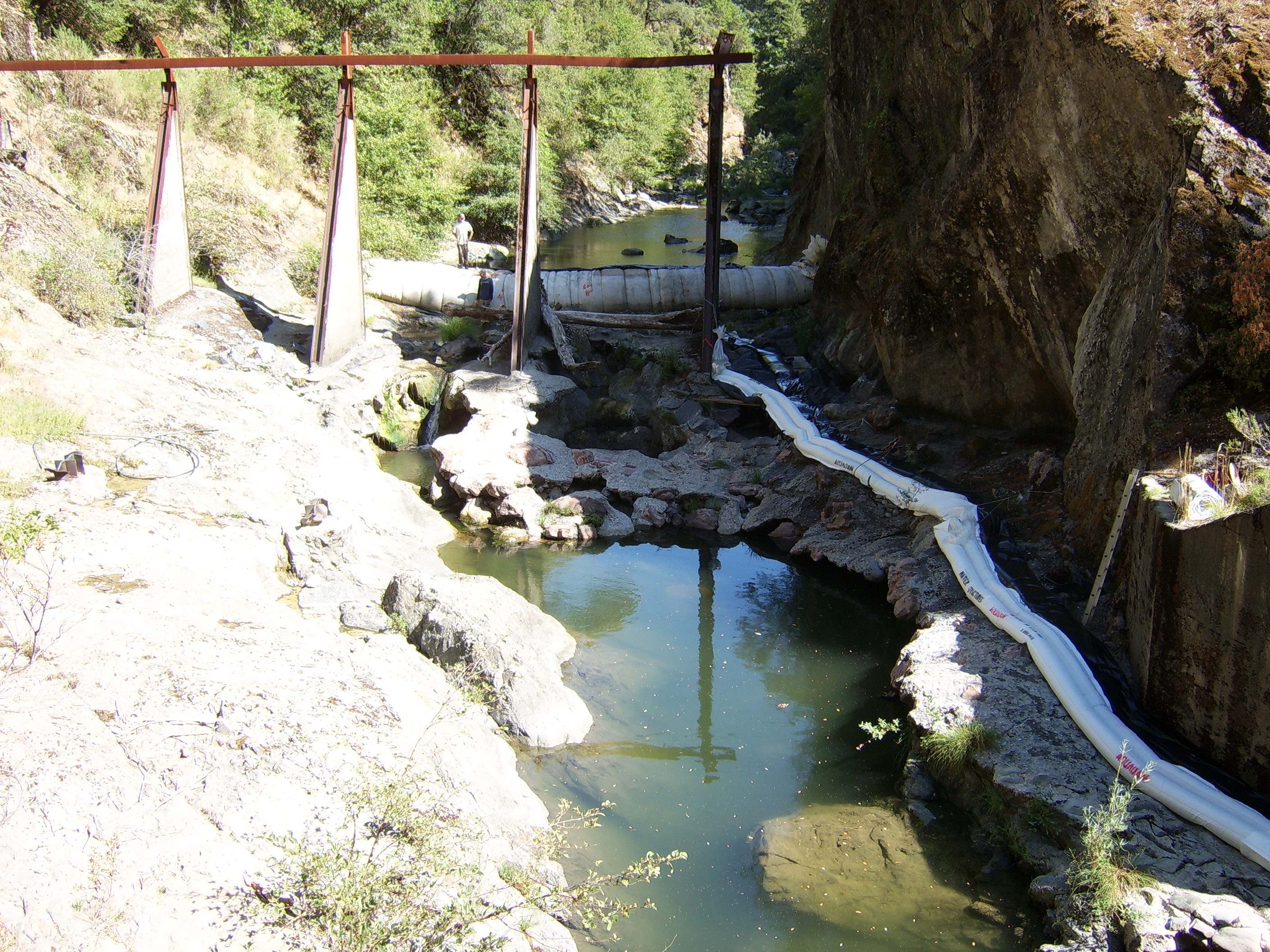
At the top of the photo, the installed 5ft tall by 80ft long SCE AquaDam is visible. Below, the 1.5ft tall SCE AquaDams run down the canyon toward the arched culvert bridge, serving to secure the flume tube in place.
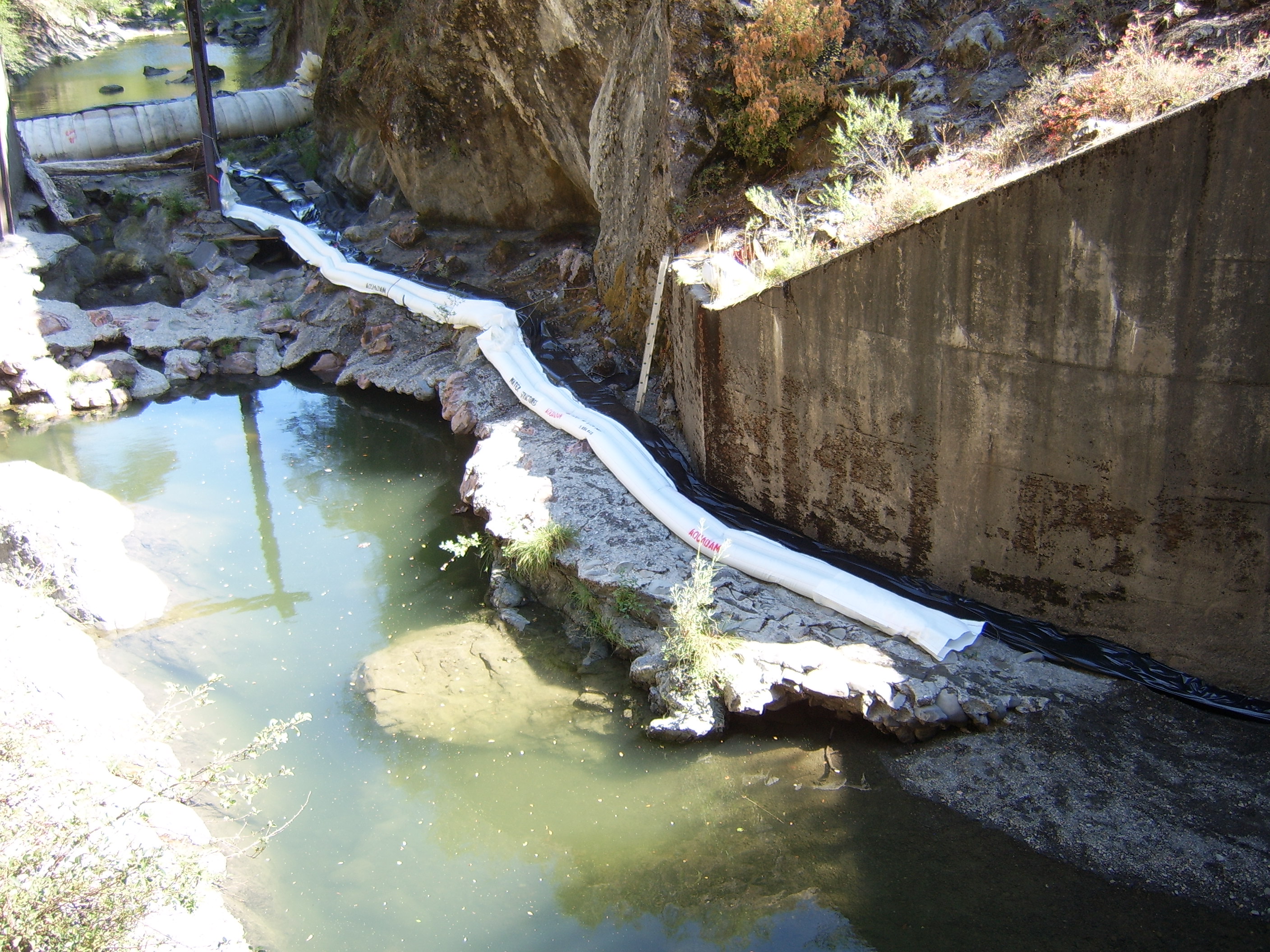
Fantastic job AquaDam!
